(Click on any image to view it in high resolution.)
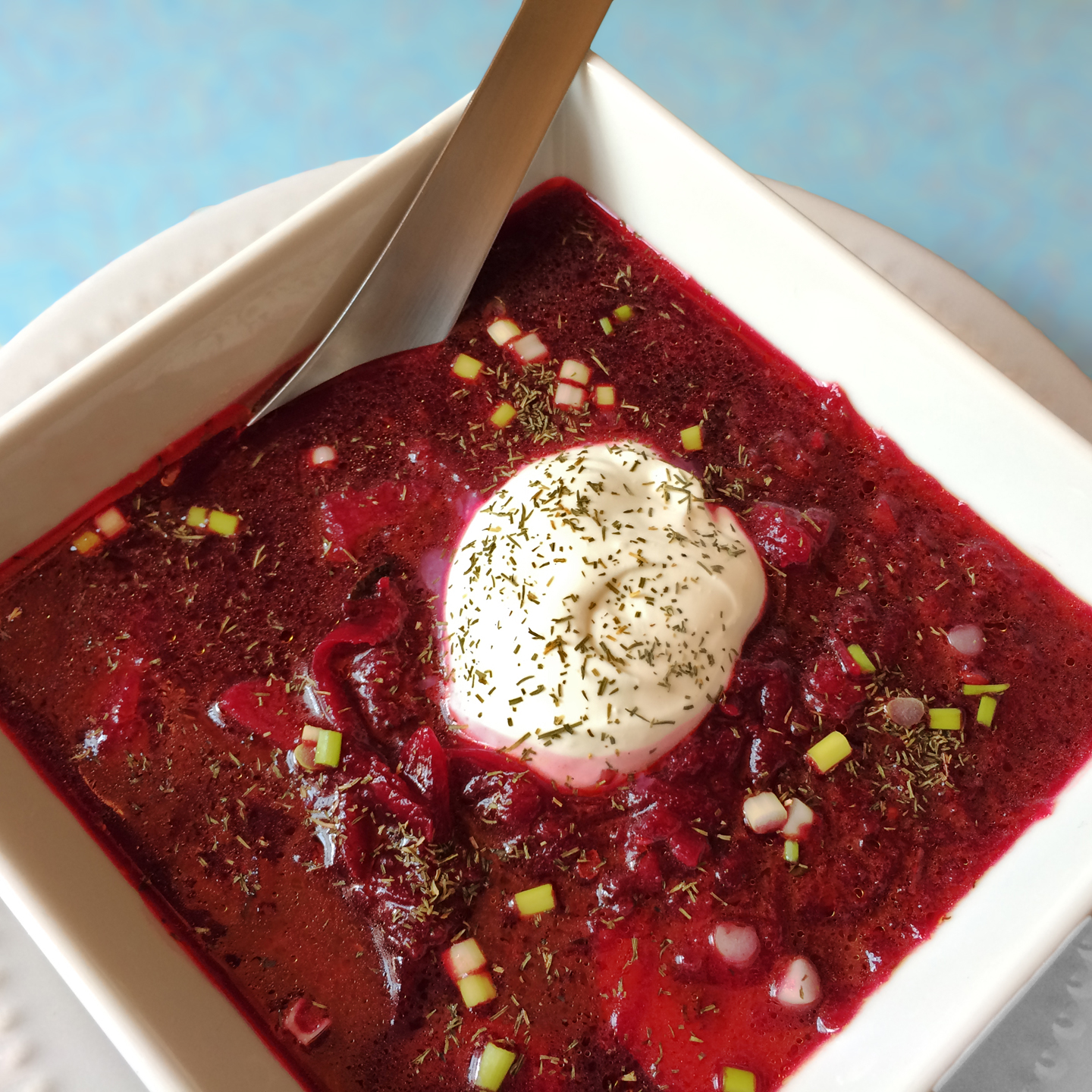
Cold beet soup for a hot beat day.
That is all.

If you love Peruvian cuisine as much as I do, you don’t want to miss New Jersey’s annual Peruvian festival held around the last Sunday of July. Accompanied by an exuberant parade celebrating the country’s culture and national heroes, it’s traditionally staged in “Little Lima”, a neighborhood in Paterson that’s home to America’s largest Peruvian community. This year’s event was particularly significant in that 2021 is the bicentennial of Peru’s Independence Day.
A few photos of the delights we enjoyed:
(Click on any image to view it in high resolution.)
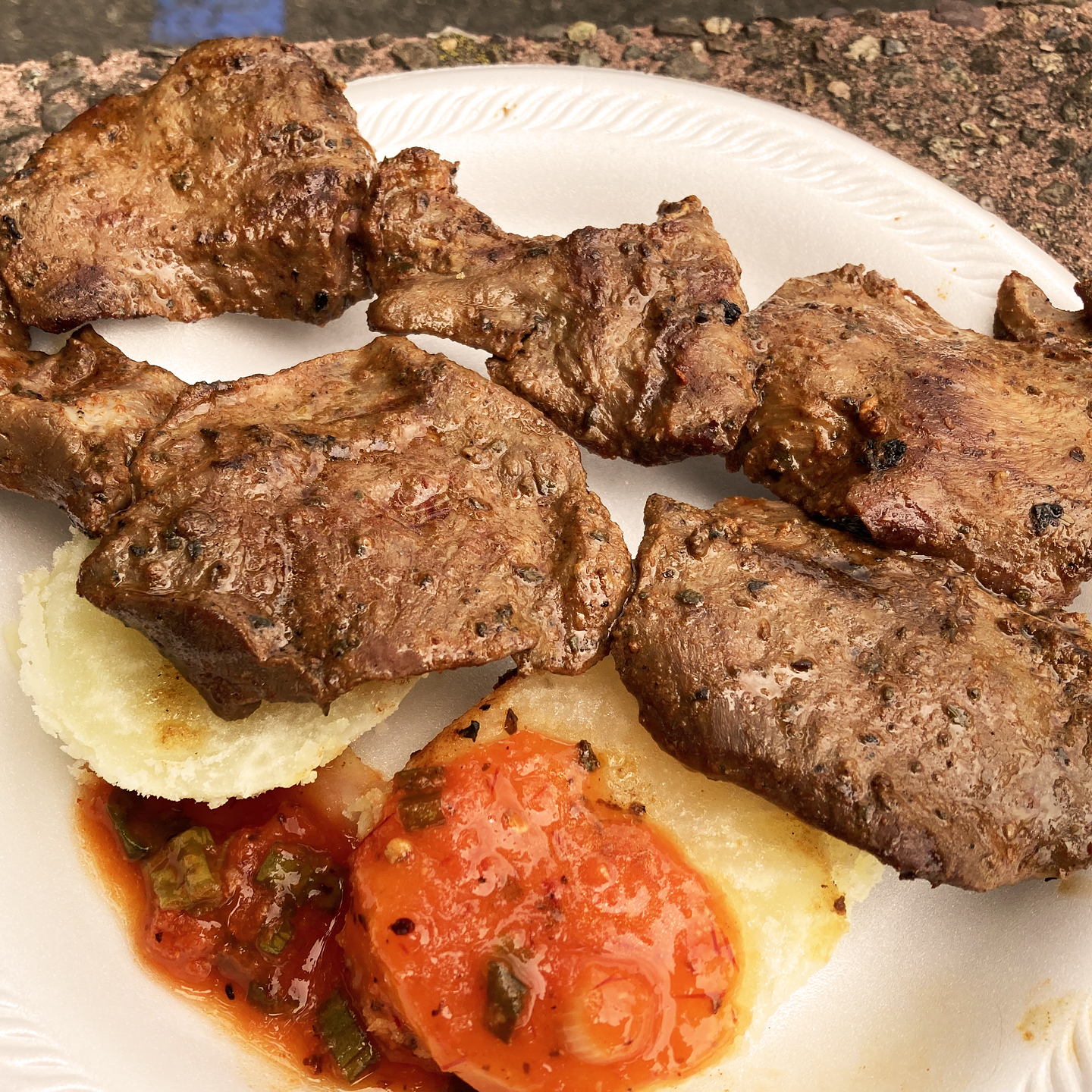
Anticuchos: tender, marinated beef heart – Peruvian street food at its finest. Don’t be faint of heart about trying this: it’s just another cut of beef, and a particularly delicious one at that. If you like grilled meat, you’ll love this.
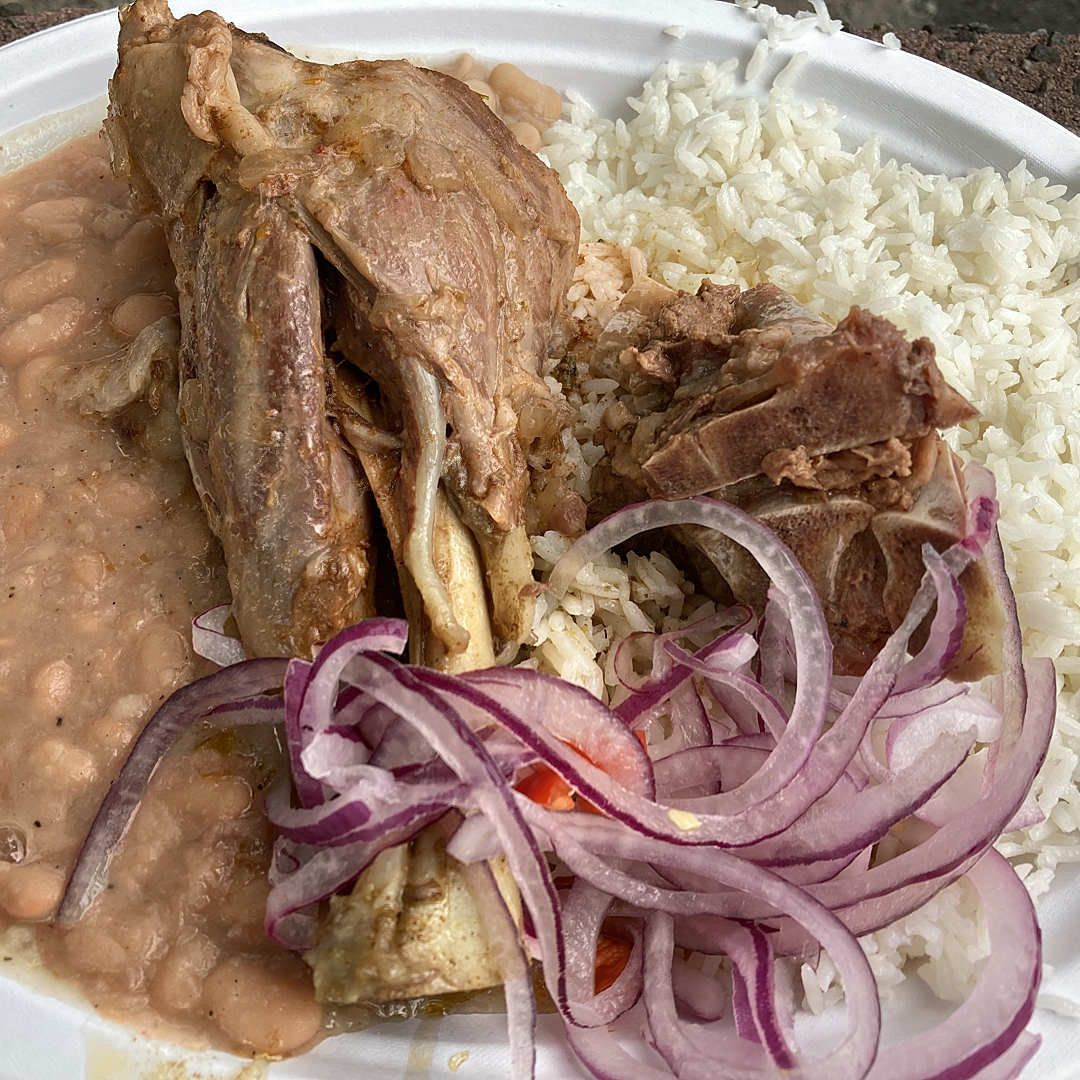
Falling-off-the-bone lamb shank with rice and remarkably delicious beans.
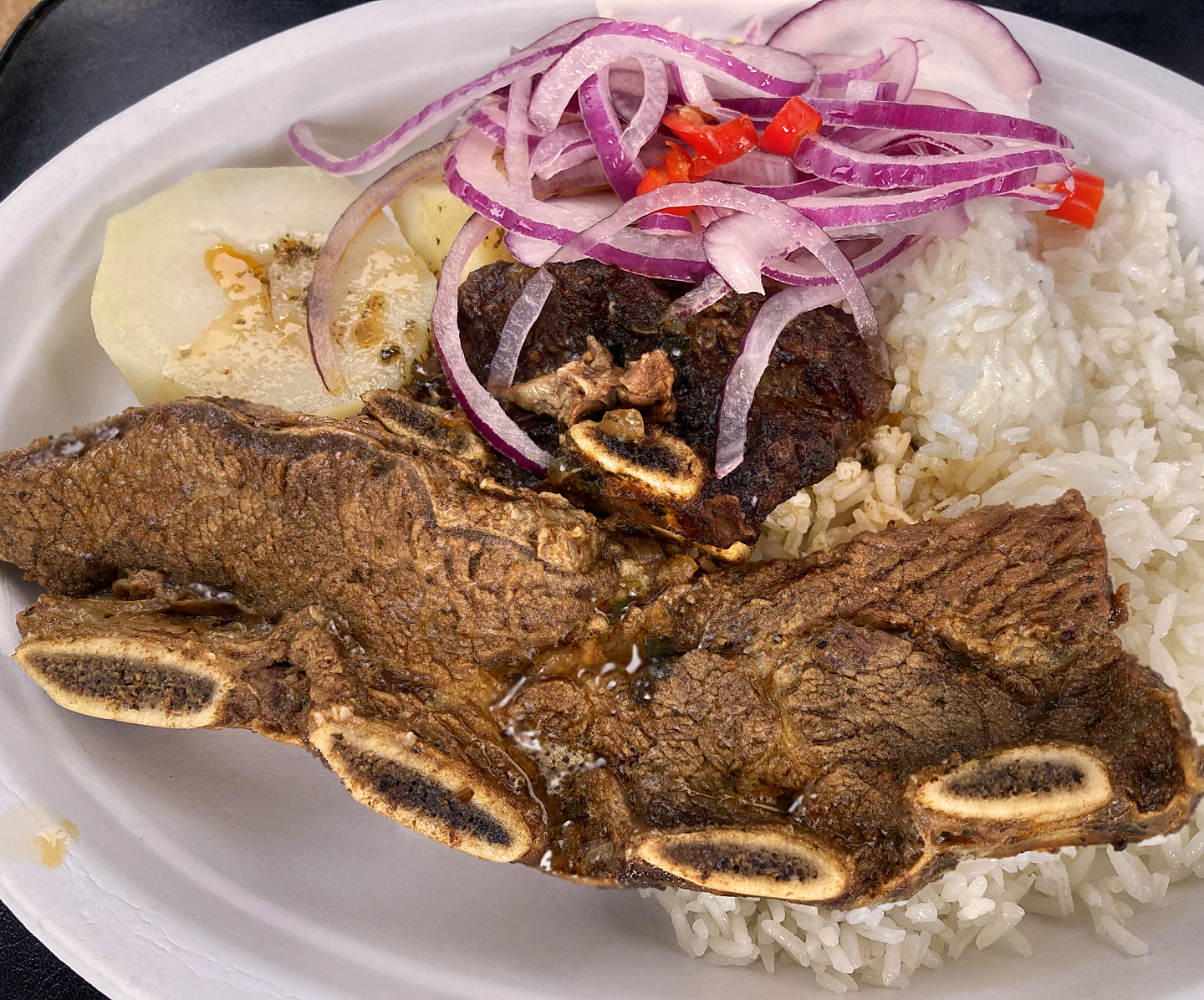
Short ribs with rice and potatoes.
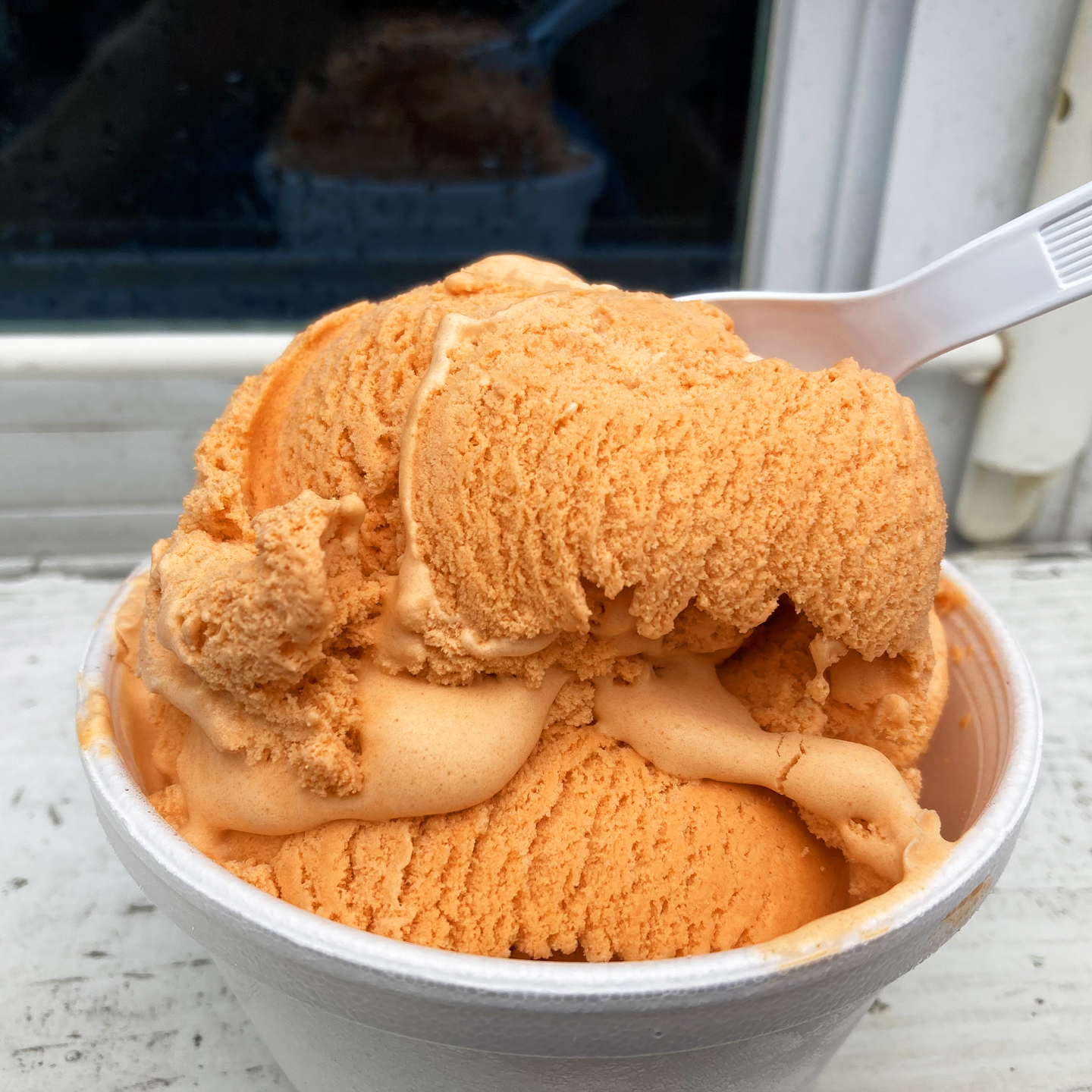
Lúcuma ice cream. Its flavor has been compared to butterscotch or a mix of maple syrup and sweet potato; it’s difficult to find fresh lúcuma locally but the frozen pulp is easy to come by in Latin American markets.
Mark your calendars for next year’s event!
(Click on any image to view it in high resolution.)
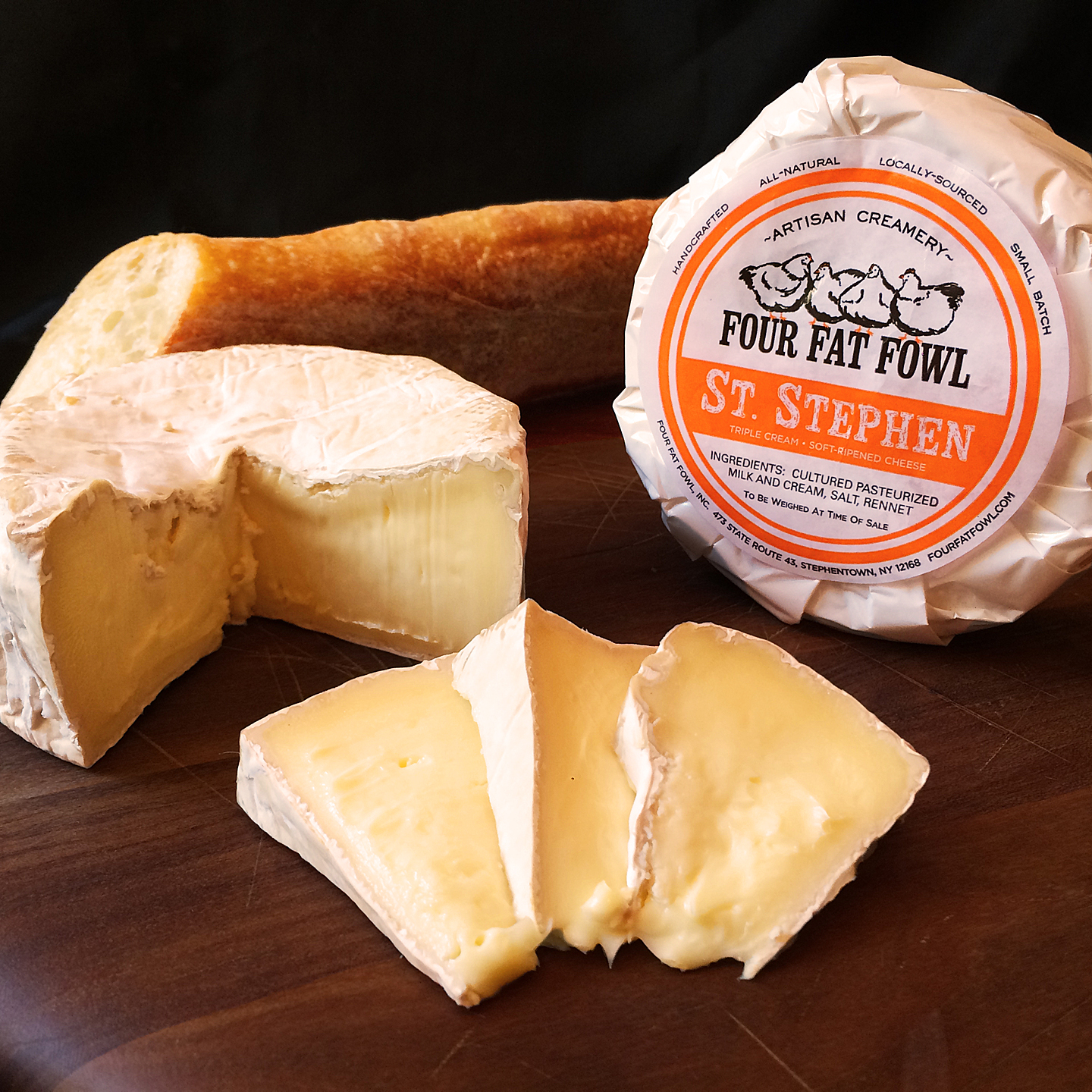
Some of you know that in addition to being cuckoo for ethnic food, I am a turophile – from the Greek word for “obsessive cheesefreak”. One of my absolute favorites is St. Stephen from Four Fat Fowl (in Stephentown, NY, of course).
Some bloomy rind cheeses are mild and buttery, some have a pronounced personality; this magnificently rich, velvety cheese manages to have distinct characteristics of both. It’s made from all natural Jersey cow’s milk and fresh cream and IMHO is at its best when aged and runny.
(If you’re careful and know what you’re doing, you can ripen your prize a little past the “best by” date. Assuming you can wait that long. Or do what I do and get two, one for now and one for later.)
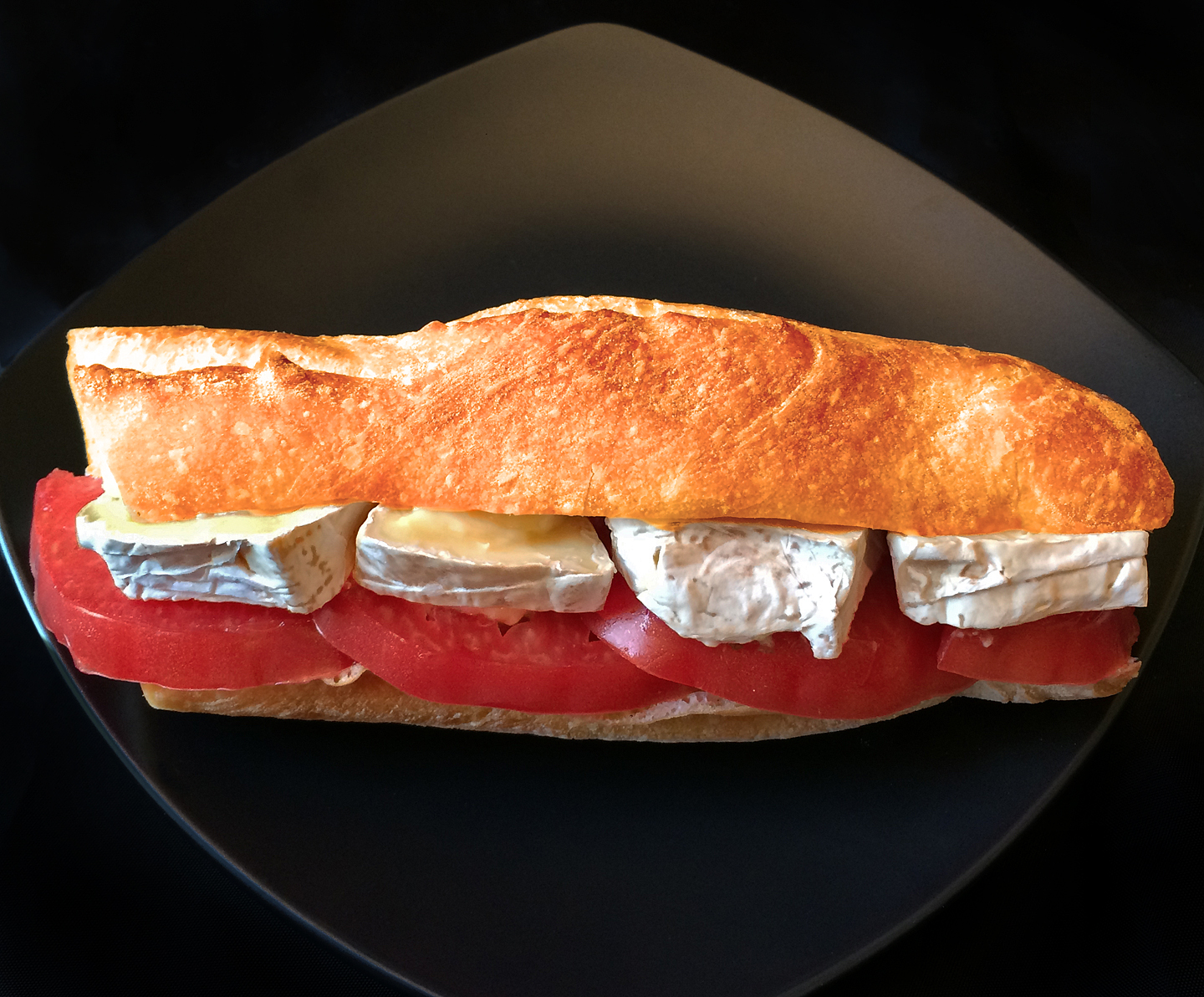
It’s a perfect candidate for the role of soft-ripened member of a well-curated cheese board. Try paring it with fresh, ripe figs for a dessert treat, or as you see here, served on a lightly toasted baguette with local farmers’ market sliced sweet heirloom tomatoes, warm from the sun.
To fully enjoy this dreamy dairy delight, please do not trim away the rind! Would you buy a perfect French baguette and then cut off the crust before you consume it? Of course not – it’s an essential component. Same rule applies here.
Look for St. Stephen at your local cheese shop or purchase it directly from their website: http://www.fourfatfowl.com.
Not long ago, I wrote that I’d be spending a lot of time in Queens developing my revised Flushing Ethnojunket 2.0. A number of businesses have succumbed to the forces of COVID-19 but happily, it seems like new ones have been popping up every day to succeed them.
My ever-vigilant Number One Spy provided me with a list of many of the newer venues; I’ve visited each and will provide my impressions about them in upcoming posts. (Spoiler Alert: she’s never wrong.) She advised me that as soon as I emerged from the subway, I’d see the new US1 Supermarket at the corner of Main St and Roosevelt Ave (with entrances on both sides). Literally three seconds after entering I spotted an overflowing mountain of these bags near the checkout area:
(Click on any image to view it in high resolution.)
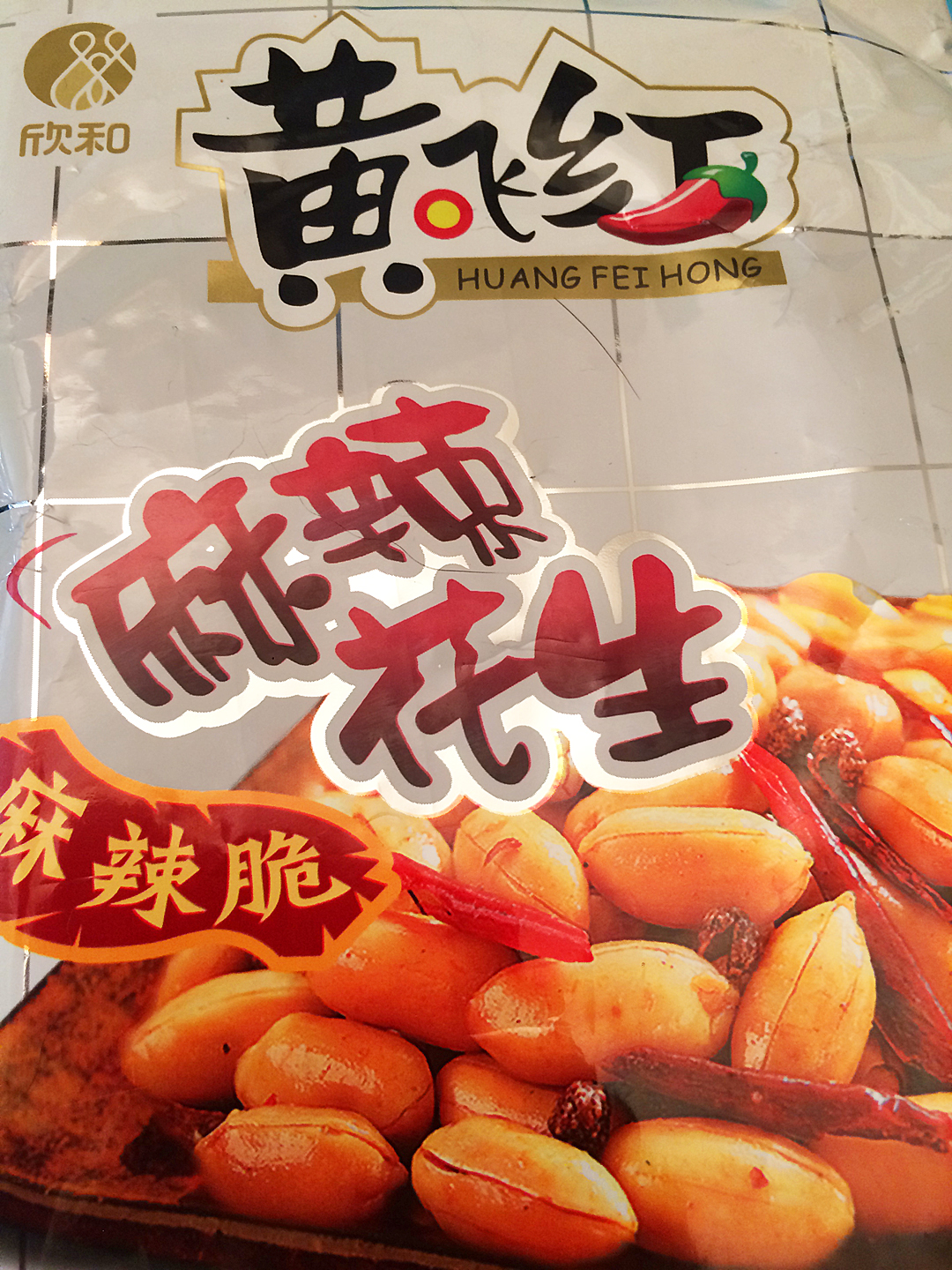
Now, this is as good a time as any to introduce you to Ethnojunkie’s Rules of Edible Acquisition. Perhaps of utmost importance is the First Rule:
If you see something that you think you might want, do not hesitate – get it immediately. It will not be there later.
They may sell the last one in your absence and for some unfathomable reason will never be able to order/make more. Or they’ve closed up shop entirely and left town. Or the gentle soul innocently standing behind you also has a knack for identifying the “good stuff” and has a forklift parked just outside.
This theory holds particularly true in ethnic supermarkets. I don’t know why, but even flashing a photo of what I bought (and gobbled up) just the day before is met with blank stares, furrowed brows, and scratched heads.
Ours is not to reason why, ours is but to grab and buy.
Corollary to Ethnojunkie’s First Rule of Edible Acquisition:
Having paid for your theoretically delicious treat, open it the instant you hit the street, taste it, and if your suspicions were correct, immediately rush back inside and buy three or four more.
As I said, it won’t be there later.
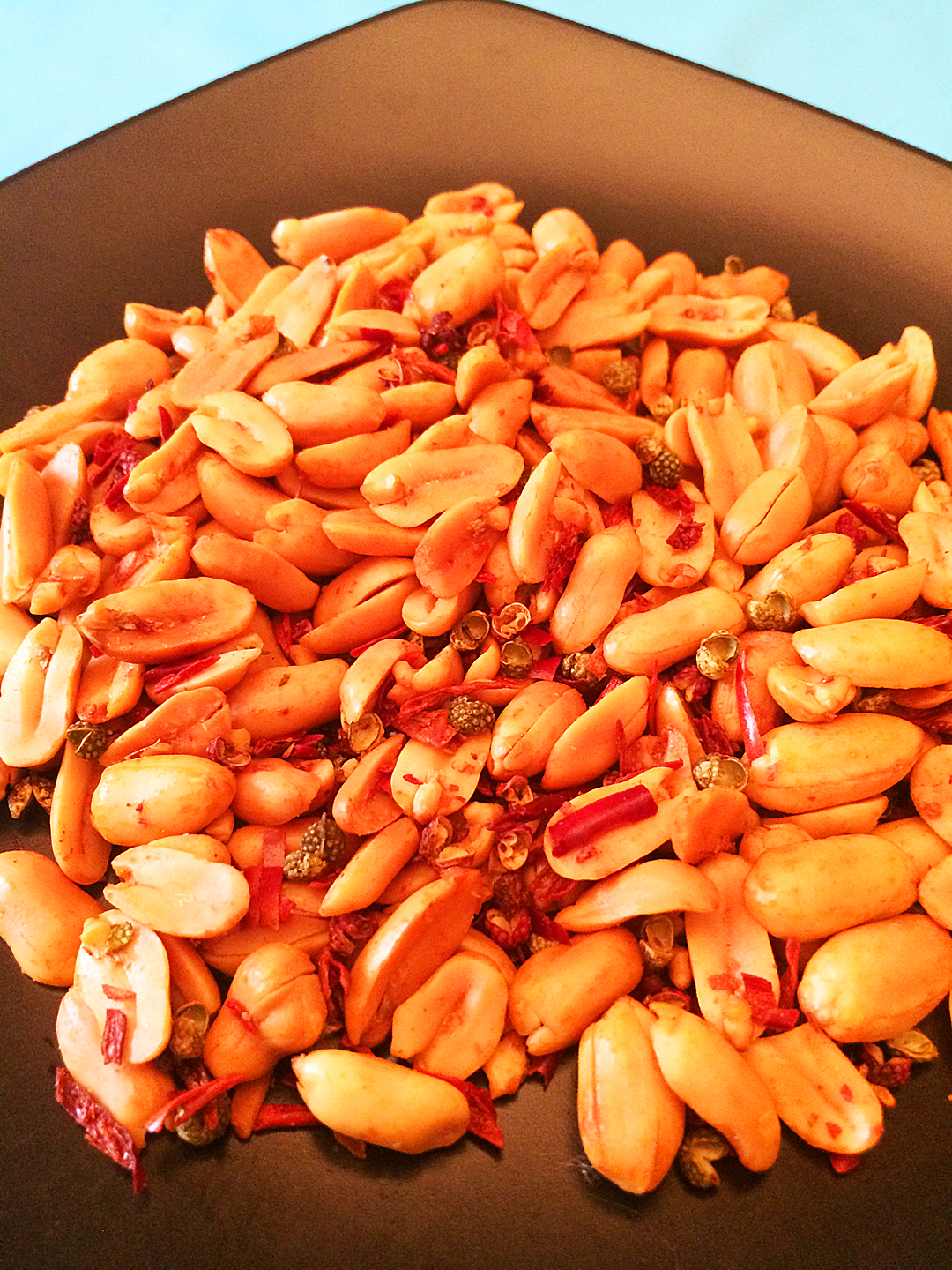
These are Huang Fei Hong Spicy Peanuts. You know how Virginia peanuts possess an eyeball rattling crunch that makes other peanuts seem mealy by comparison and intimidates them into leaving the table in disgrace while contemplating a new career as pigeon feed? Not only do these share that addictive characteristic but they are accompanied by bits of dried red chili and Sichuan málà peppercorns. Snacking perfection in a package. They are mind-blowingly, amazingly wonderful and that is not hyperbole.
(Pro tip: If you can’t take the heat, you don’t have to get out of the kitchen. Just shake the bag and many of the spicy bits will fall to the bottom giving you easy access to the now-subdued still-yummy peanuts remaining on top.)
Now you know what to look for and where to get them.
Fair warning: I am warming up my forklift.
More Flushing treats to come….
(Click on any image to view it in high resolution.)
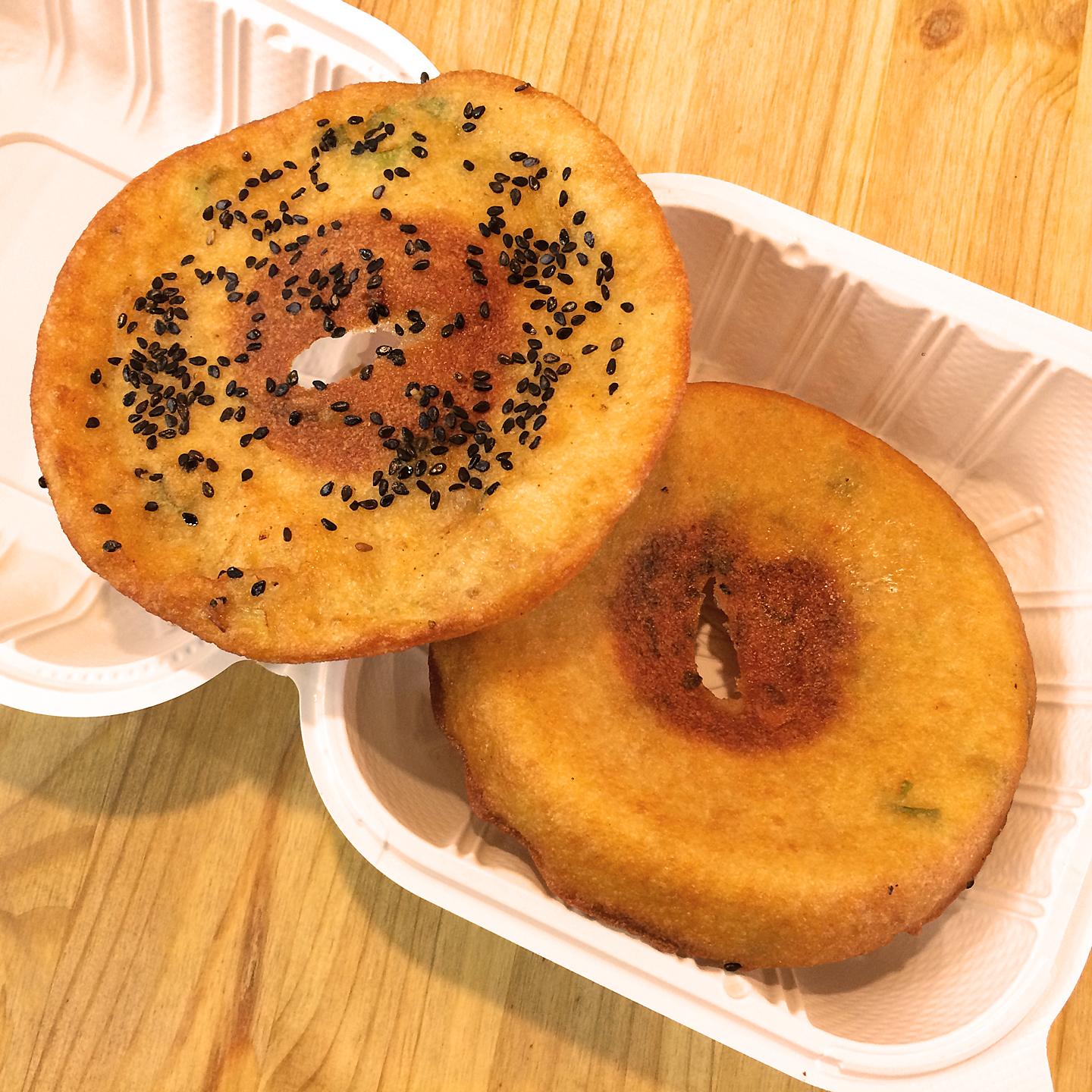
Resist the urge to expect this to taste like some kind of bagel. Despite outward appearances, this morsel of savory perfection is not bready, but more “potatoey” for lack of a better description, and even that doesn’t quite nail it. You’re looking at two orders (one flipped) of Heat Noodle’s delicious Fried Sweet Potato Doughnut. (Don’t expect it to taste like a doughnut either.) Topped with black sesame seeds, crispy at the edges, soft and creamy-chewy within, it’s another must-try.
It’s easy to walk past Heat Noodle (aka Wuhan Foodie, Inc.) at 135-21 40th Road in Flushing – even more than once! Here are a few window and door images to help you find your way.
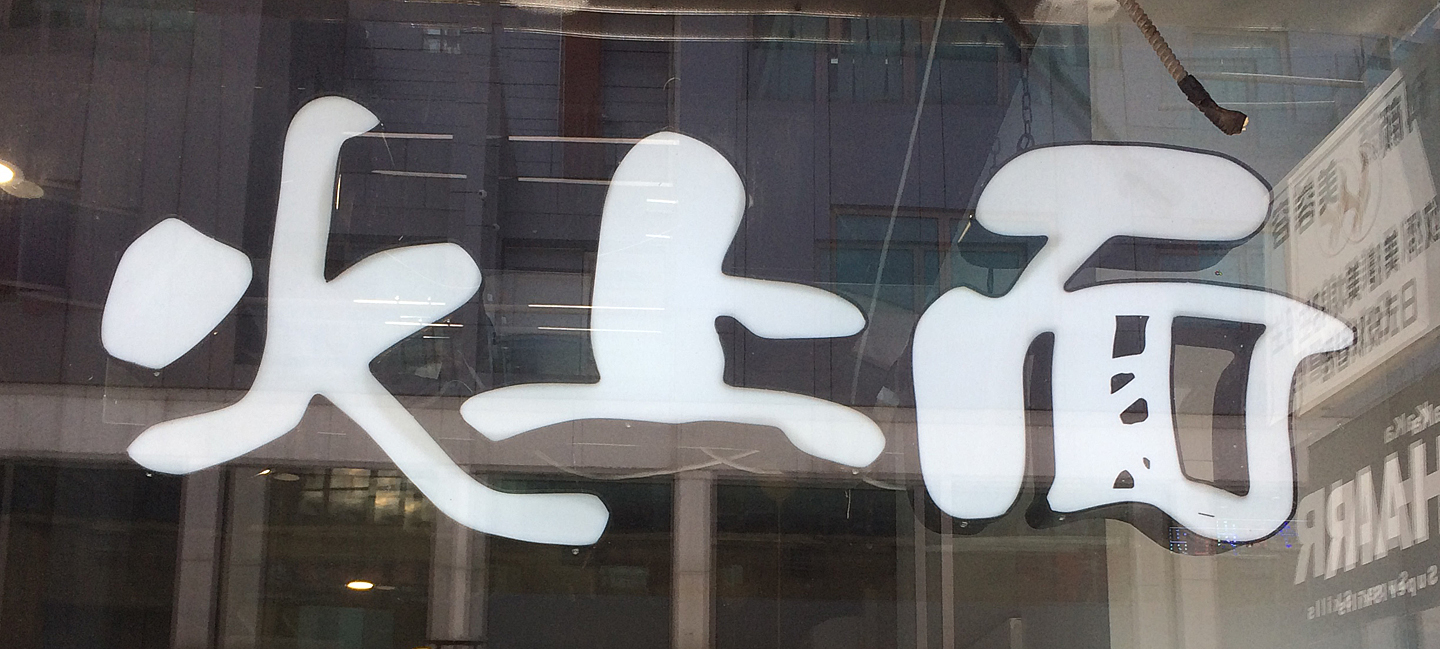
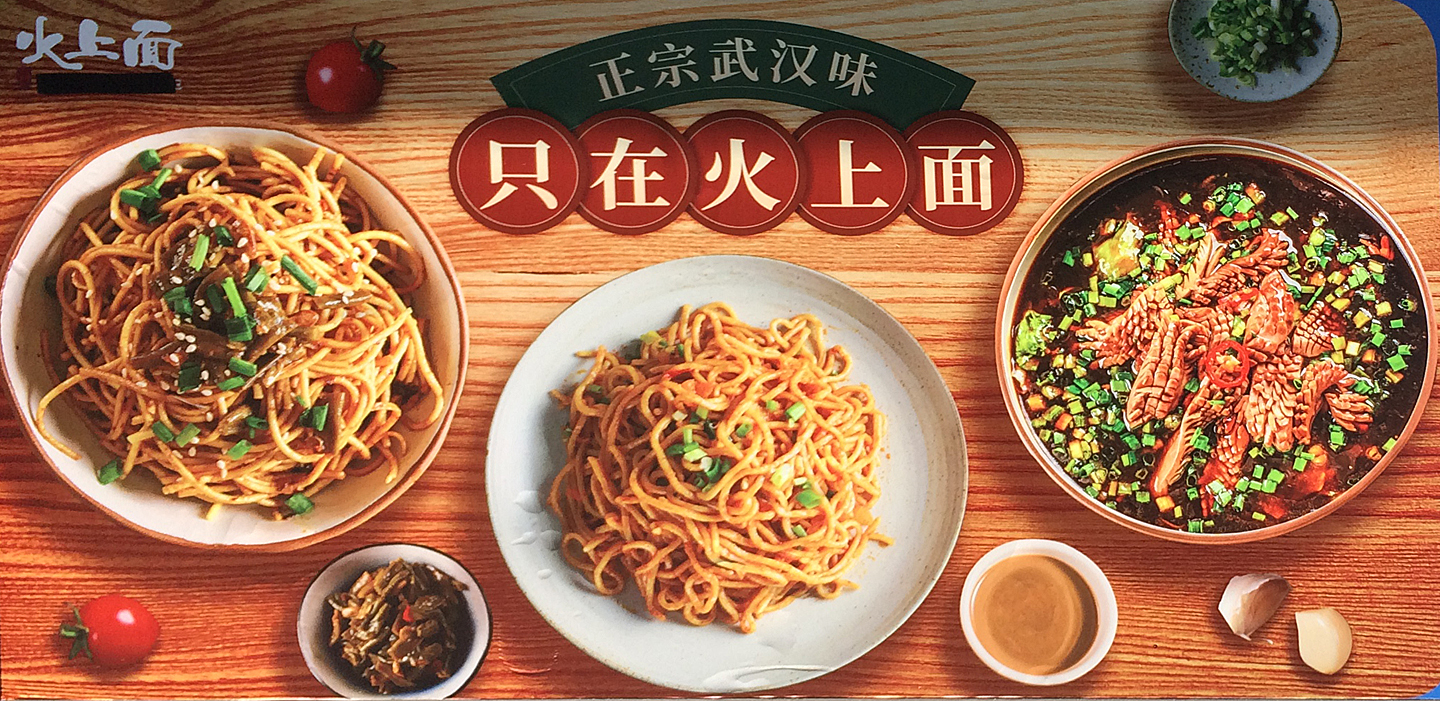
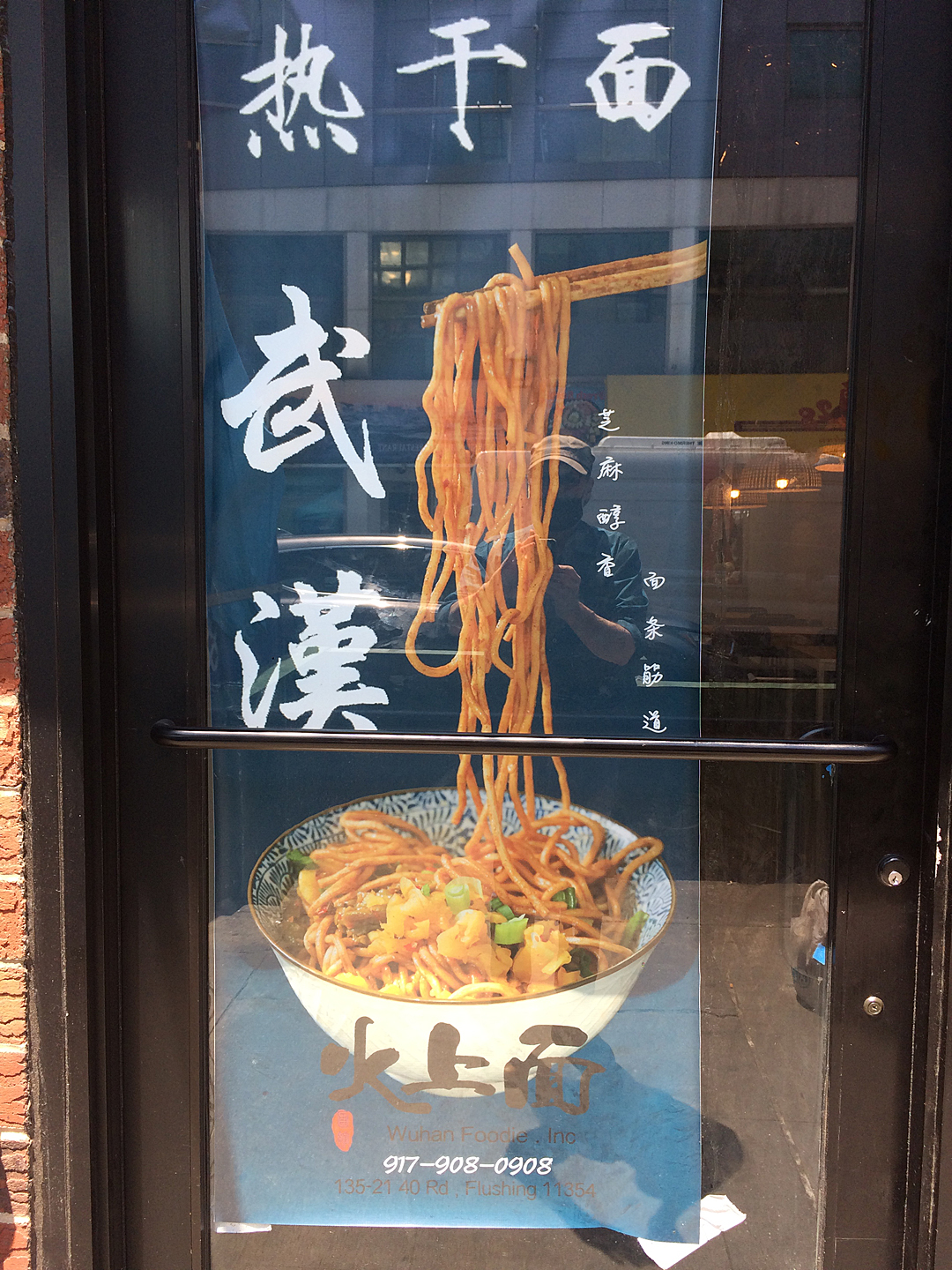
You can read the first Heat Noodle post here.
Part eight in a series of reports.
Some folks look forward to the annual celebration of their birthdays or anniversaries; for me it’s the occasion to cover America’s largest food and beverage trade show right here in New York City, Specialty Food Association’s Summer Fancy Food Show. (Check out full coverage and a description of a past event here.) Aside from the fact that it affords the chance to hob and nob with other professional foodies, see what products and brands are trending and poised to make a breakthrough, and get a sense of what the industry thinks the marketplace is craving, it gives me the opportunity to turn you on to new products to watch for locally or order online.
The 2020 FFS was, like almost everything else, canceled because of the pandemic, but the organization has announced a 2021 iteration of the event coming soon. At a previous show, I was introduced to Nature’s Charm canned Young Green Jackfruit Confit; in its yellow ripened form it’s one of my favorite fresh fruits, but the unripe green version also figures into a number of cuisines (particularly Southeast Asian) as a savory ingredient and is especially popular as a meat substitute among vegetarians and vegans.
(Click on any image to view it in high resolution.)
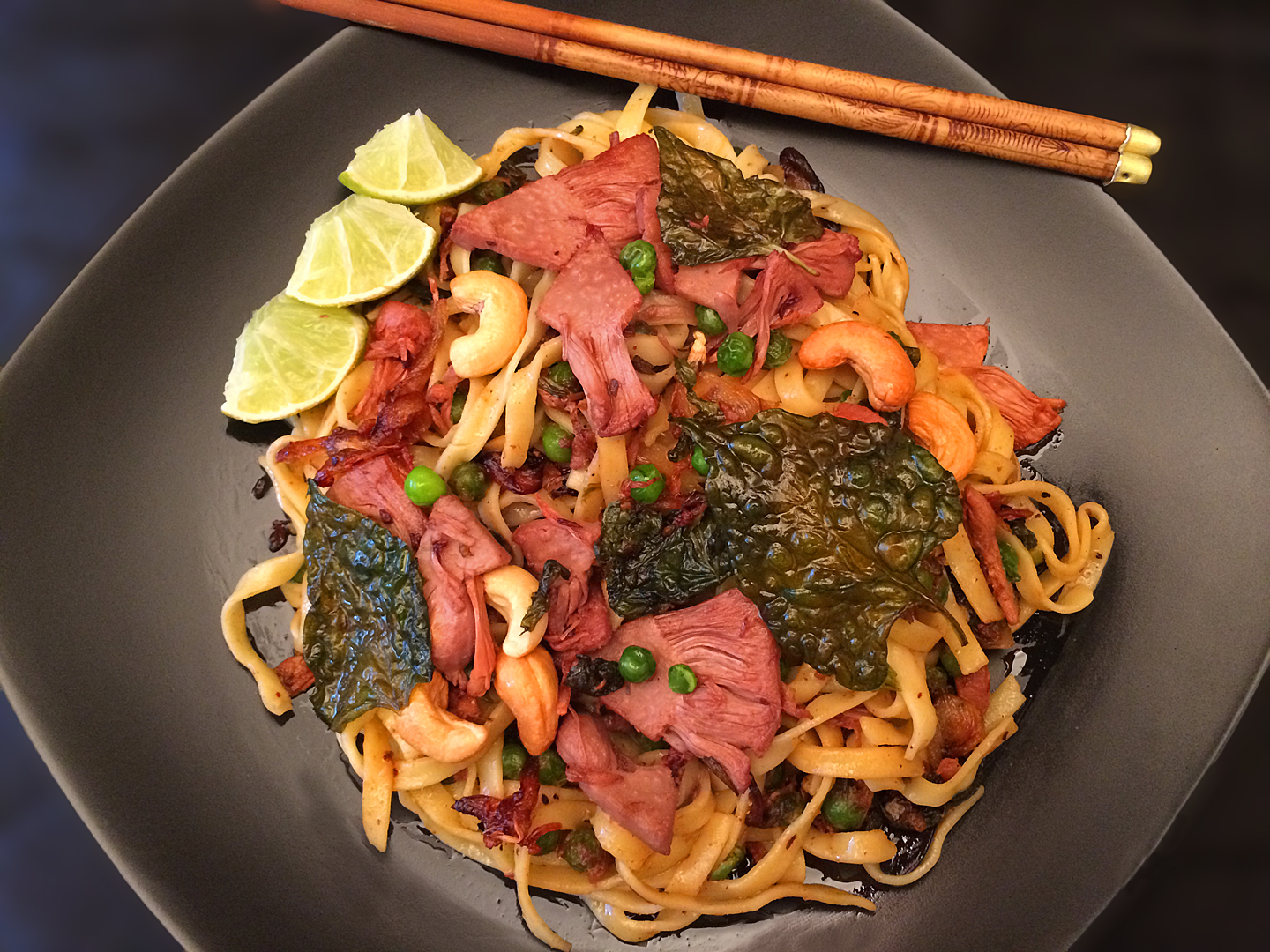
I used this confit variation in a stir-fry with fresh Chinese noodles, peas, and cashews. The dish started out with caramelized onions, shallots, pressed garlic and ginger plus a paste containing dried chilies, tomato paste, and a bit of coconut milk to loosen things up. The outlier ingredient was fish mint used two ways here: julienned and sautéed with the aromatics, and fried as a garnish.
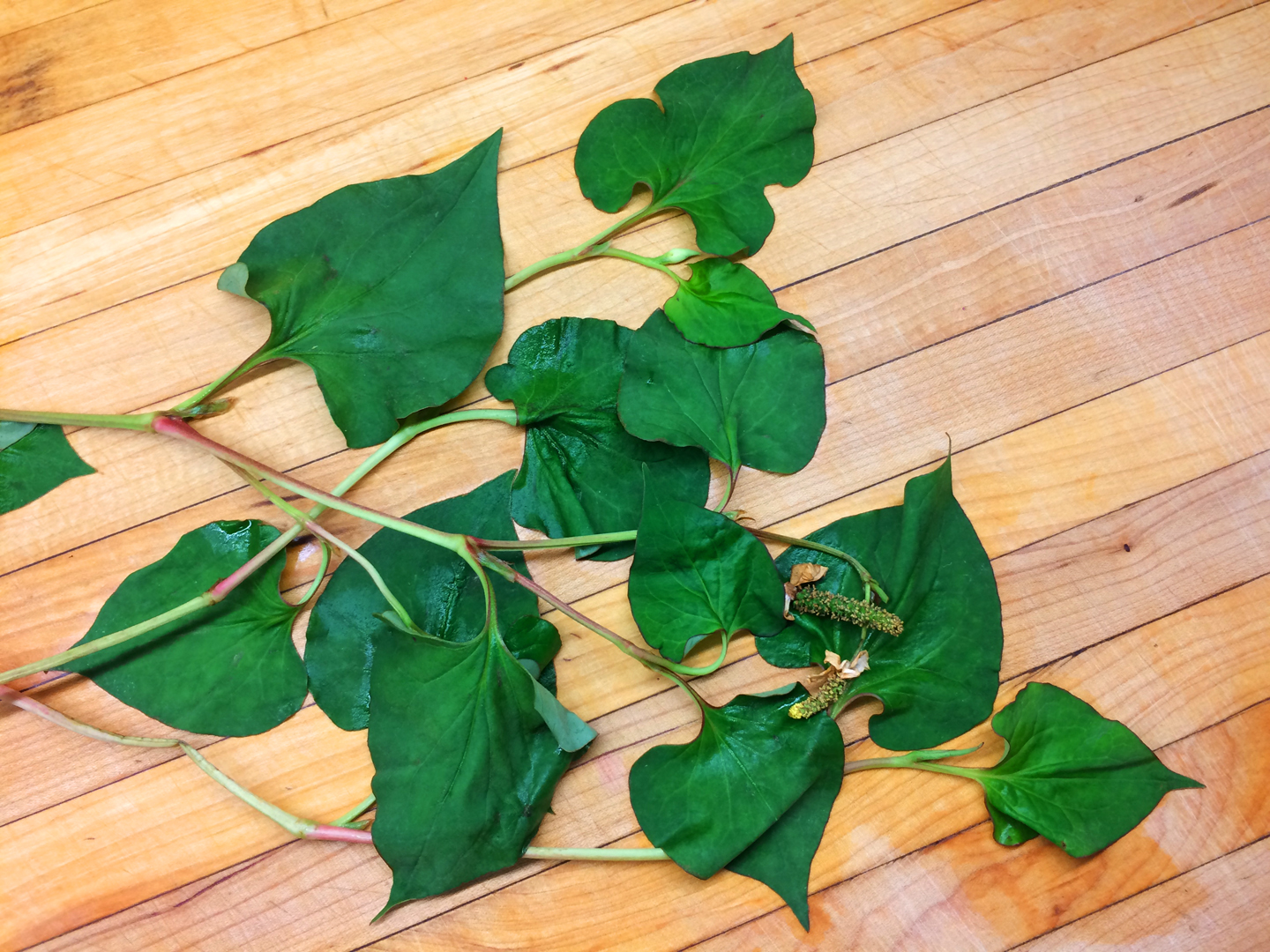
Fish mint (botanically, Houttuynia cordata) does have something of a vaguely fishy character, but that doesn’t really describe it precisely. Its common name is almost calculated to drive you away (like “mugwort”), even though it does have a toe dipped in accuracy. It’s also known as rainbow plant and chameleon plant. Better.
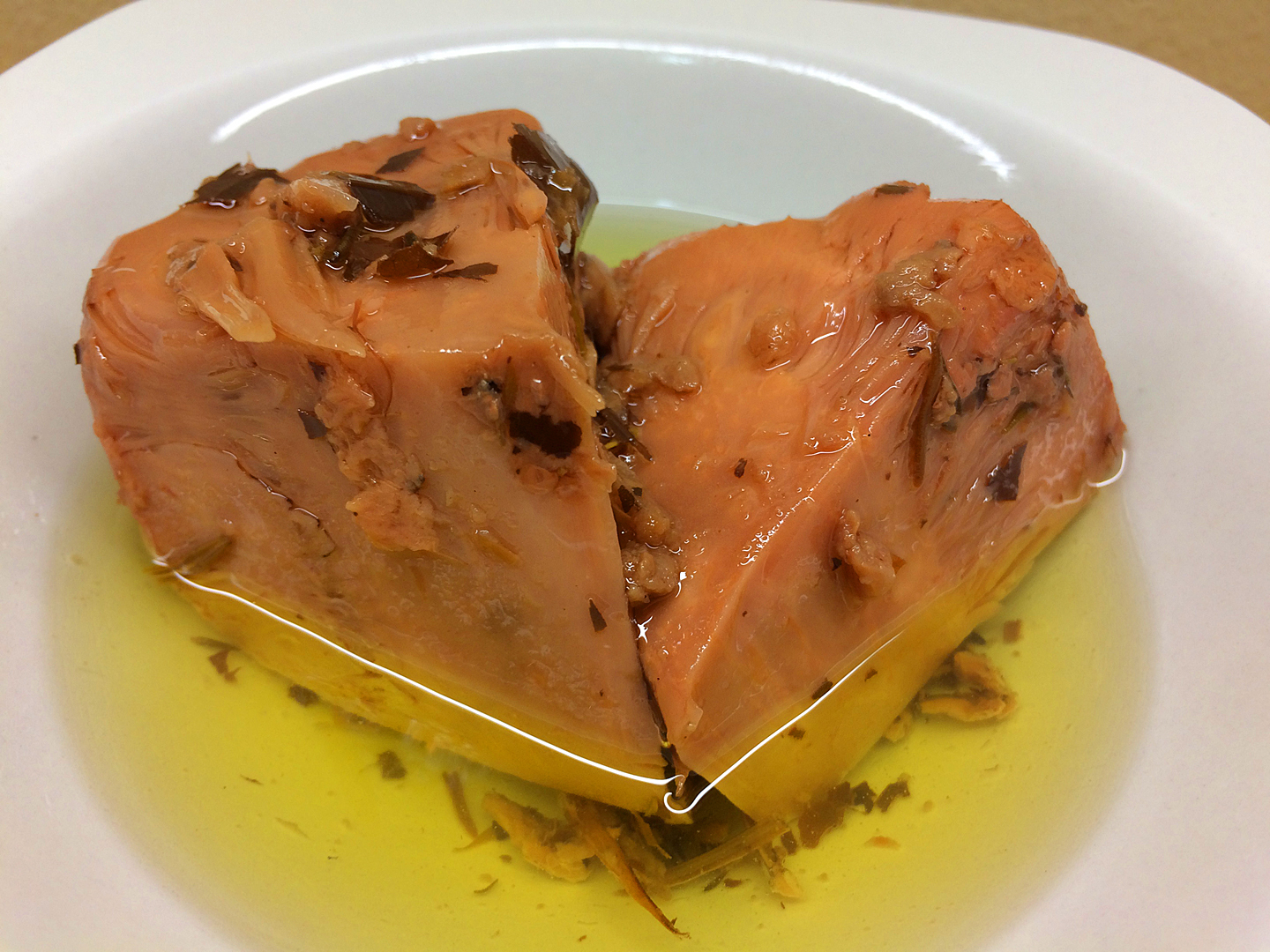
The jackfruit confit straight out of the can is falling-apart tender (it’s a confit, after all), not sweet in the least, and it picked up the flavor of the aromatics beautifully. I also used the seasoned oil in which it was packed as an ingredient for the sauce.
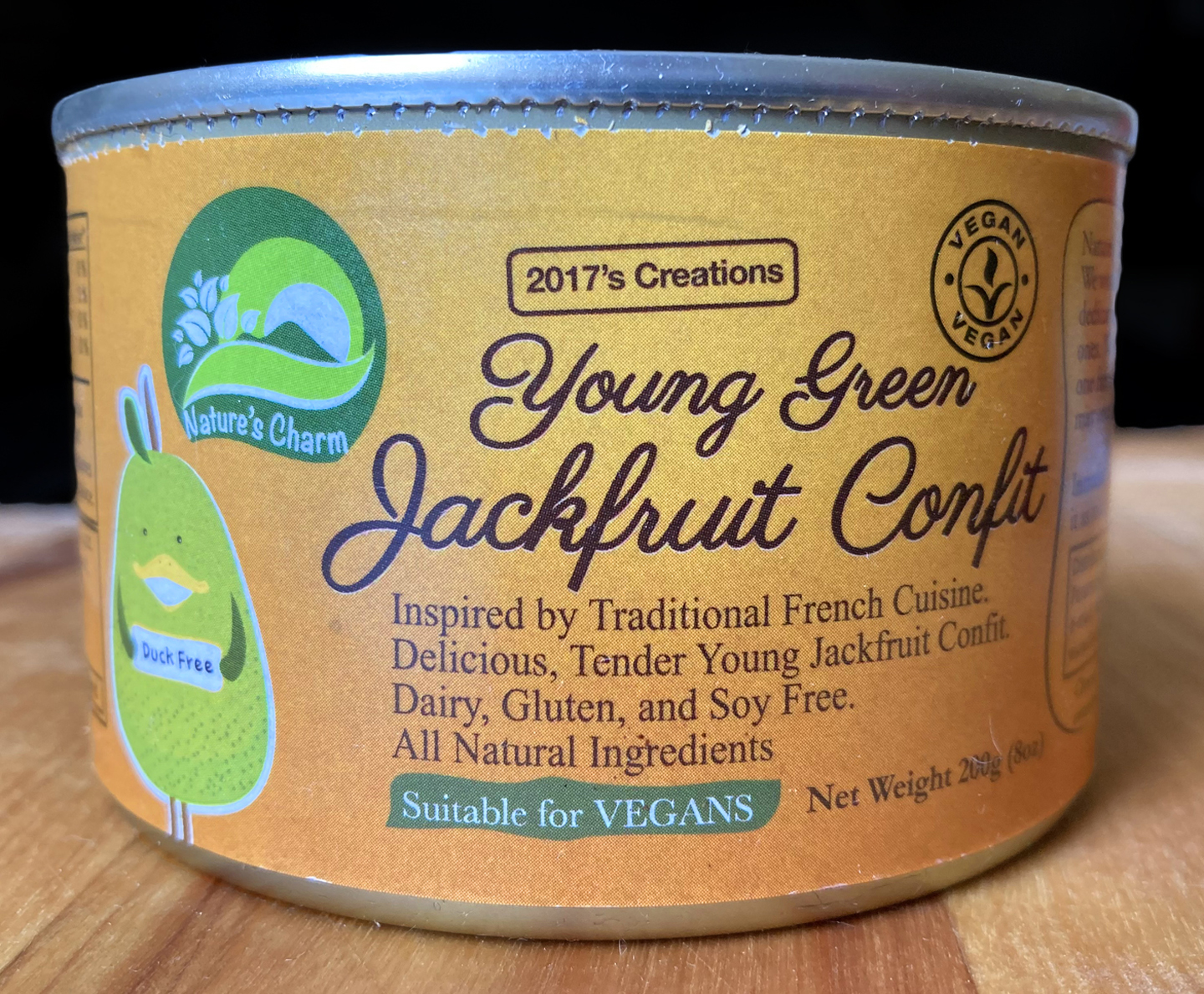
Ready to try some experiments of your own? Find Nature’s Charm Young Green Jackfruit on Amazon.com.
And while we’re on the subject of vegetarian meat (isn’t that an oxymoron?), I’ve concluded that Suniupai Vegetarian Beefsteak has even more possibilities for incorporating into a dish than the skewers from the previous post; I can easily see how these could figure into a stir fry. (For the record, I’m not necessarily looking for a meat substitute, just experimenting.)
(Click on any image to view it in high resolution.)
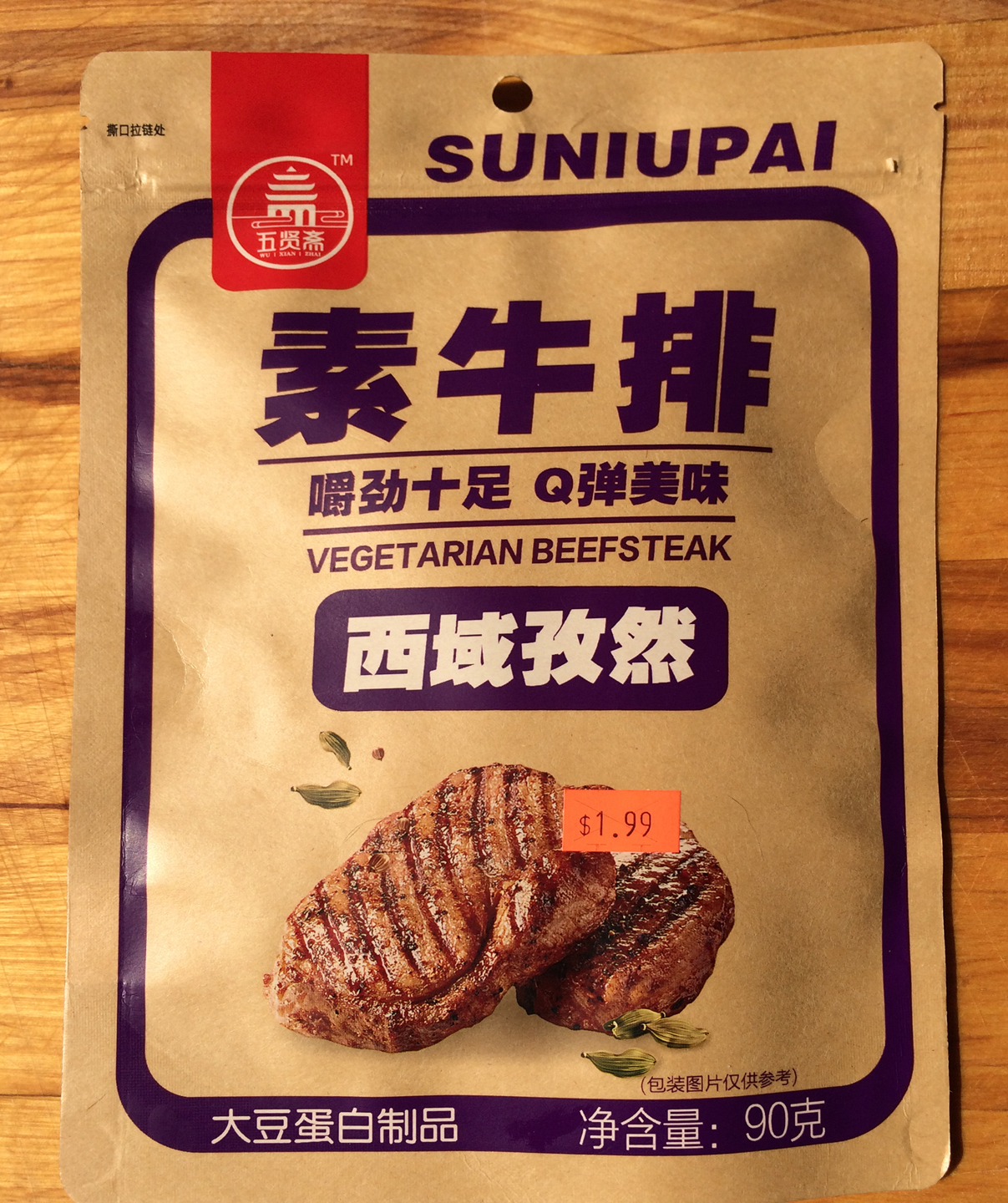
Like the skewers, this “Dried Beancurd Chunk” is available in several flavors; I chose the one labeled “Cumin” and it was surprisingly delicious. I also tried the “Spicy” version and it lived up to its descriptor perfectly.
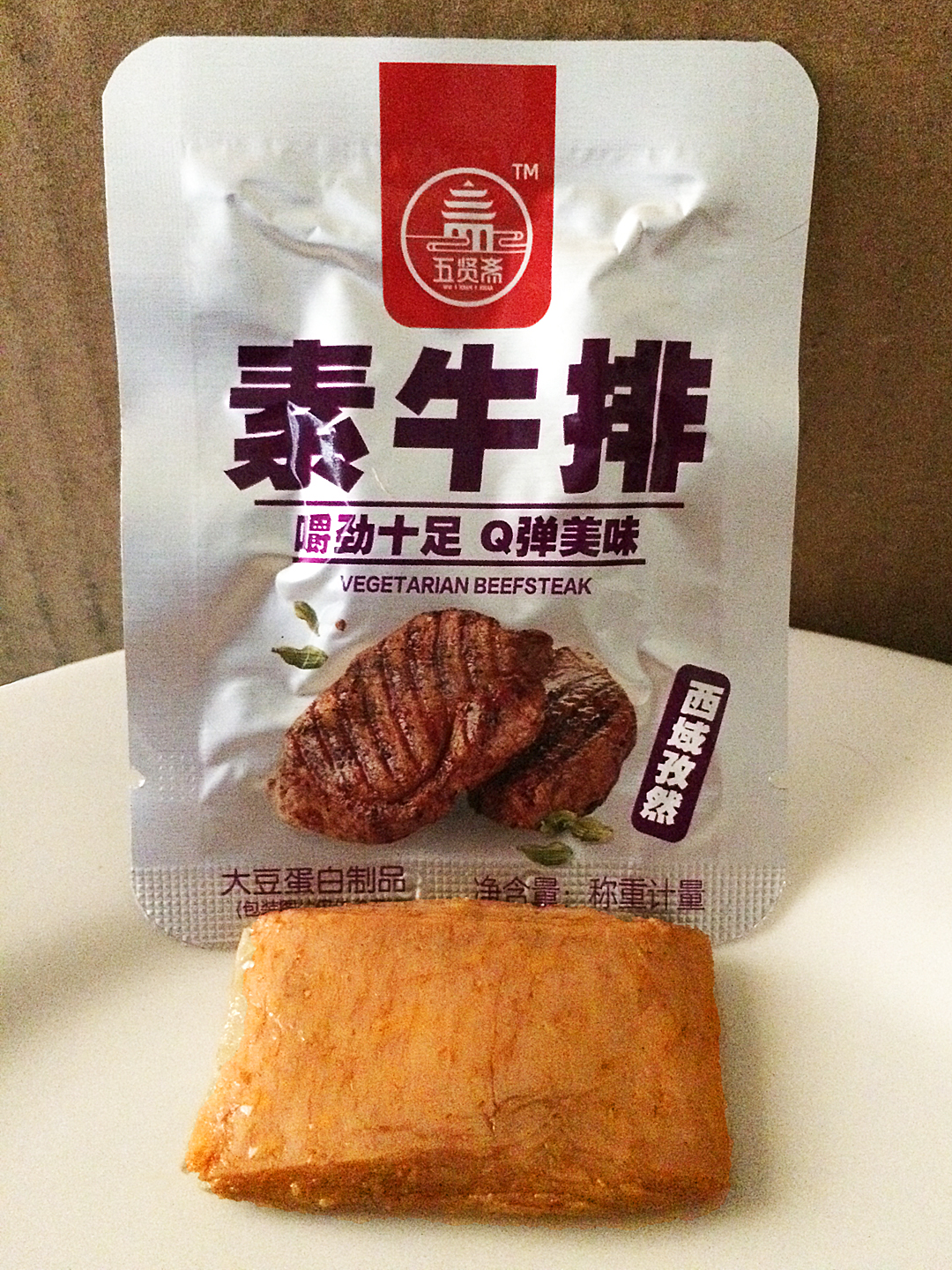
The bag contains nine foil packets (about 3" x 4"), each of which encloses a single slab (about 2" x 1¼") of pressed wannabeef with similar shredding capabilities as the skewers; they possess an unmistakably (unmisteakably?) meat-like texture, although perhaps with just a bit of processed meat chew – a little too much bounce, but I’m quibbling.
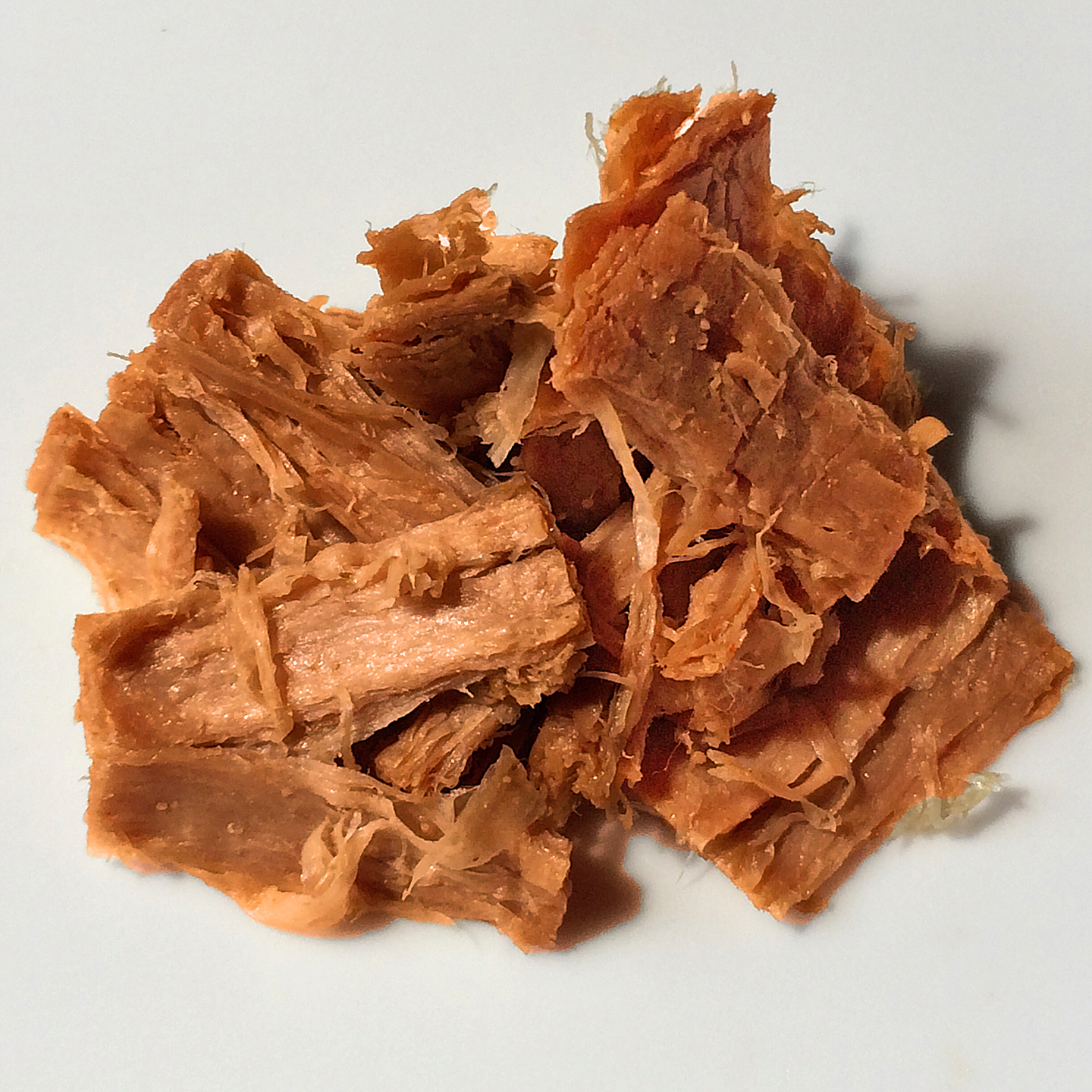
Actually, just biting into a chunk wholesale definitely misses the mark and I don’t recommend it, but shredding brings out its formidable potential. I see a Home Cookin’ post in the future.
More from the snack aisle coming up – next time: sweets!
…and it’s in a Chinese supermarket snack aisle, then it probably isn’t meat.
(Click on any image to view it in high resolution.)
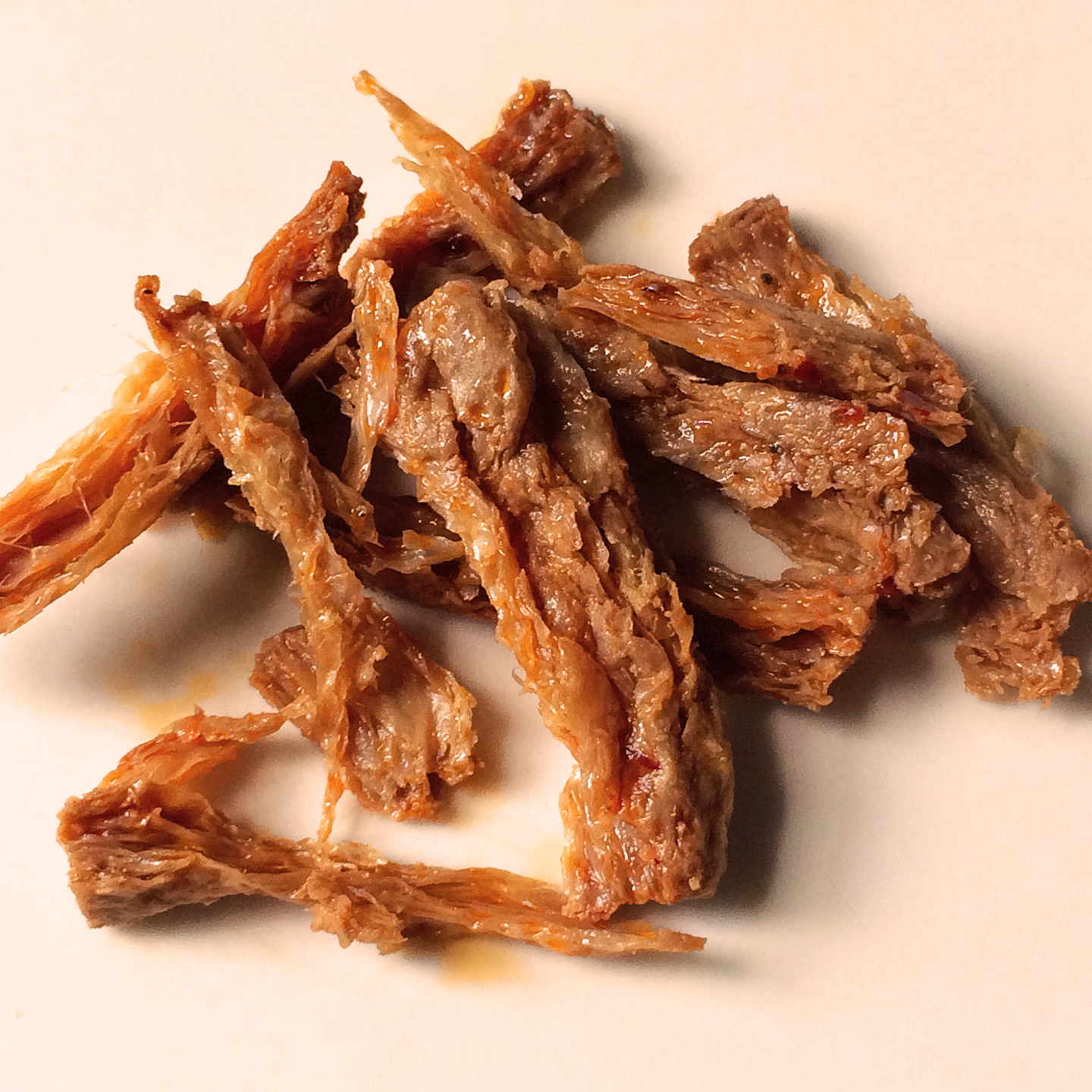
I’ve been spending a lot of time in Flushing lately reworking my local ethnojunket, so I have the freedom to wander through every single aisle in sensational supermarkets and tell myself I’m working rather than just indulging my culinary whims. I confess to being a sucker for the snack aisles at Asian supermarkets; the treats are subdivided into savory and sweet categories and frankly, it’s a bit of a gamble – some are truly remarkable and beg another bag, some, well, not so much. More about that in an upcoming post.
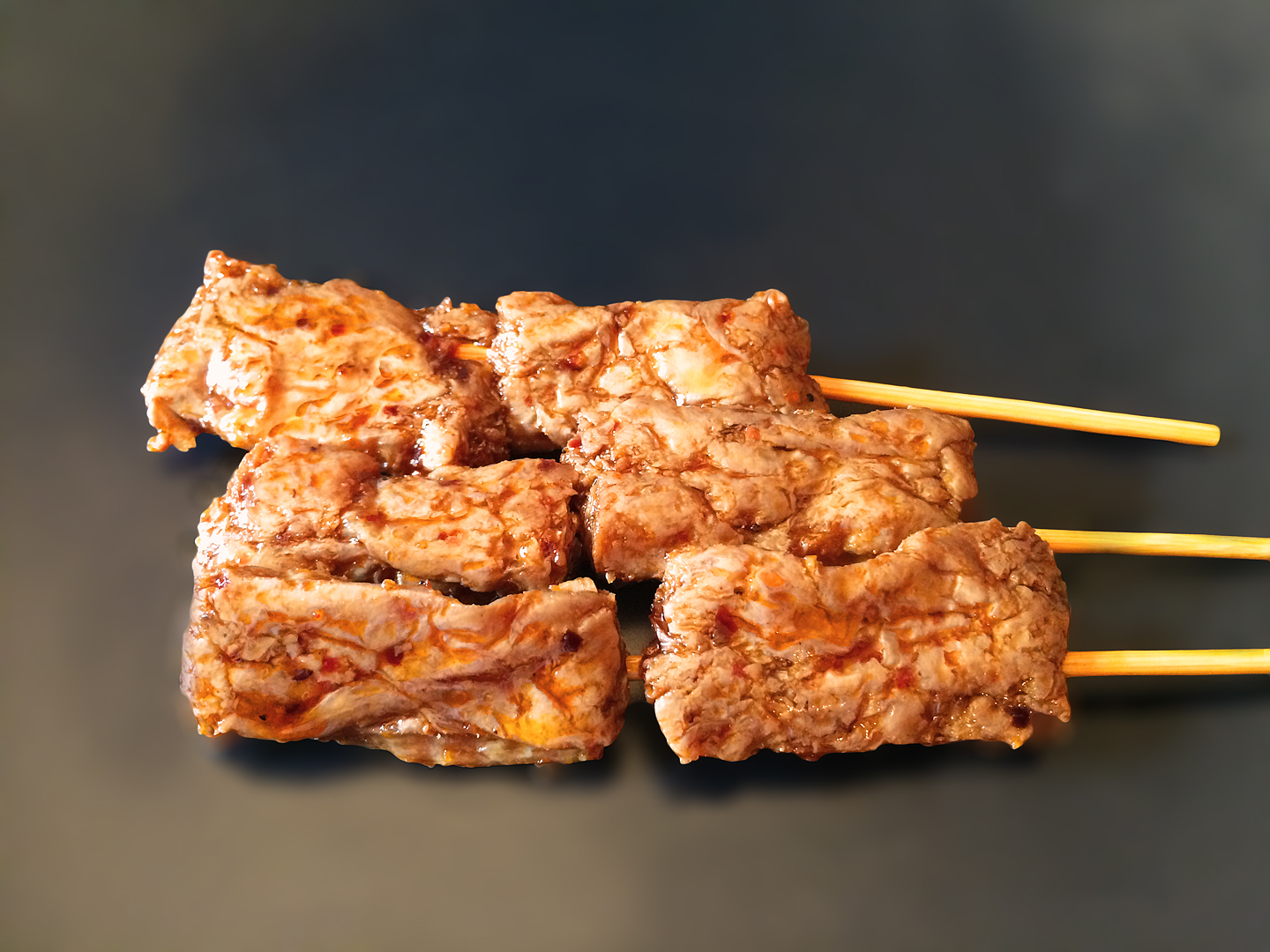
These diminutive wannabeef barbecute skewers fell into the former category; the two chunks impaled on each wooden stick measure about 3¼ inches taken together. The four “flavors” available on this visit were Exoticism, Passion, Enjoy, and Soar; I selected Enjoy because they were identified as spicy on the back label: “Beancurd String (Spicy Flavor)”. Aside from the incredible shreddable texture and true chew, it was sufficiently spicy to give it a pass as well-seasoned meat.
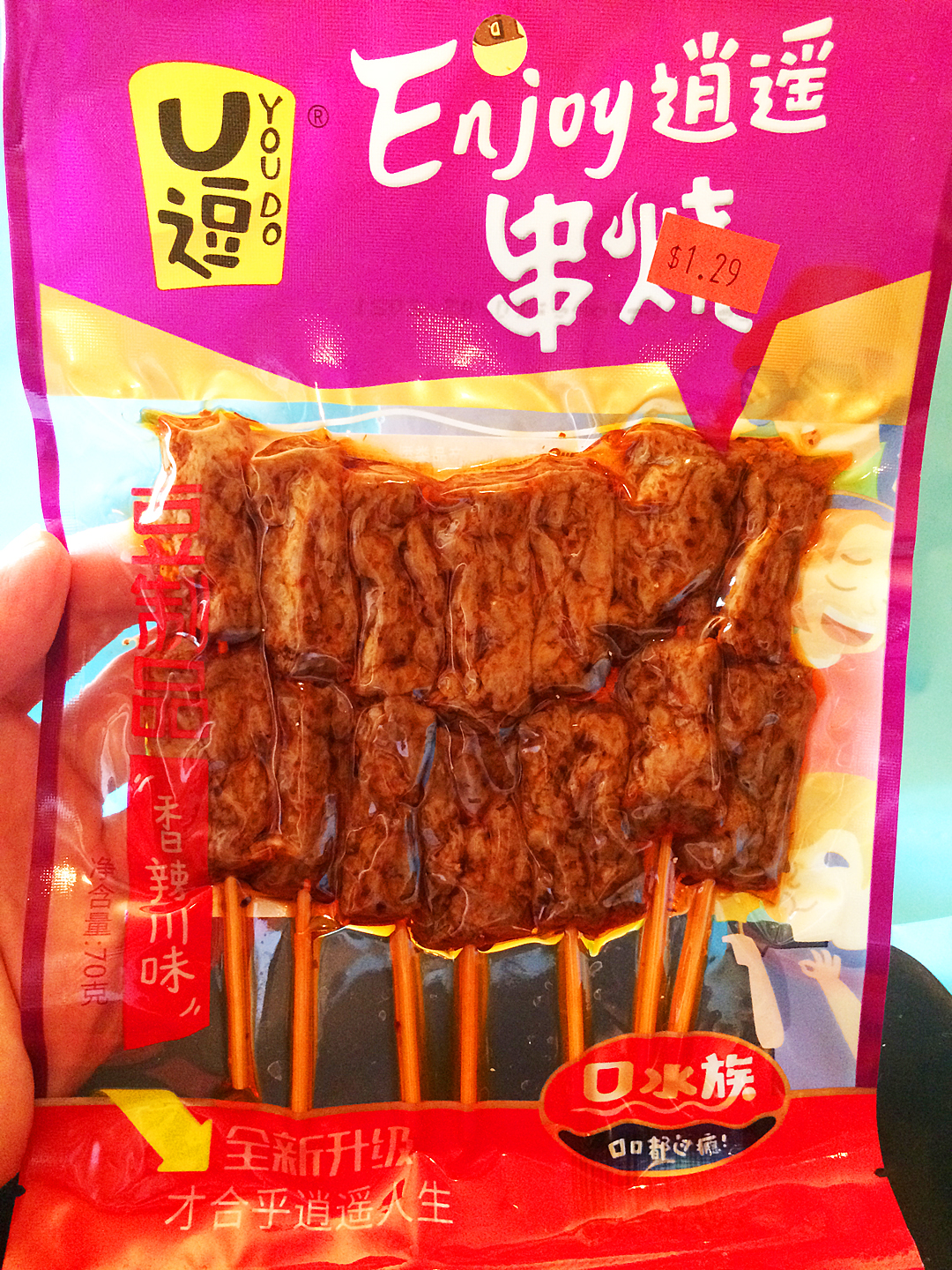
I understand that these are marketed as snacks, but I’m inspired to incorporate them into some home cookin’. We’ll see. Of course, there are actual dried fish and meat jerkies to be found in the same aisle as well, but I’ll save those for another post.
More Flushing snacks to come. Stay tuned.
It only seems like decades ago when I was a regular visitor to the hallowed food court in New World Mall. Back then, I was drawn to stall #10, Heat Noodle, and their Wuhan cuisine, and had every intention of eating my way through their entire menu (like I do). Then COVID-19 entered the picture. Full stop.
Although the pandemic isn’t over yet, I’m back in Flushing a couple of times a week making up for lost time and restructuring my ethnojunkets since some businesses have closed, but happily, there are new openings in the neighborhood as well. (Regular readers know that an ethnojunket is a food-focused walking tour through one of New York City’s many ethnic enclaves.)
Heat Noodle has since graduated into its own venue at 135-21 40th Road and their talent in the kitchen is top notch. For many reasons, I’m jazzed that Wuhan, the capital of Hubei Province in the eastern central part of China, is getting some culinary love.
Our group was keen to try a variety of noodle dishes on offer. Sesame paste figures into many of these but sufficient additional ingredients provide differing, if subtle, shades of flavor. The chew of Wuhan style noodles is key, and the variety of toppings such as preserved or fresh vegetables kept redundancy to a minimum.
Here are a few of the items we tried, in no special order:
(Click on any image to view it in high resolution.)
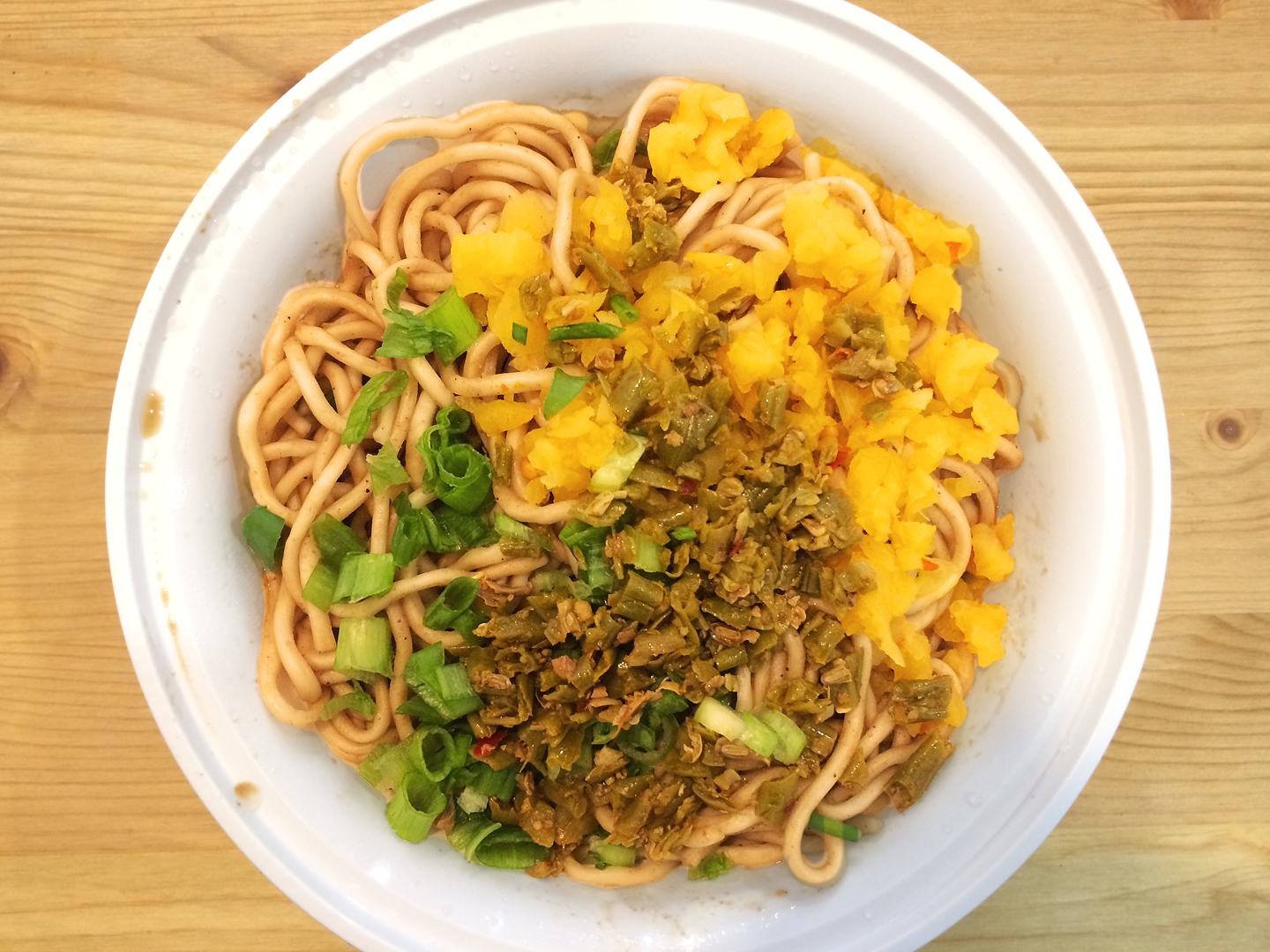
Hot Dry Noodle. A1 on the menu and a must-eat, Hot Dry Noodle (rè gān miàn, 热干面) is famous as the breakfast of champions in Hubei Province. Preserved veggies (pickled radish and chopped long bean, I believe) and fresh scallion topped the chewy, slightly sweet, slightly spicy noodz.
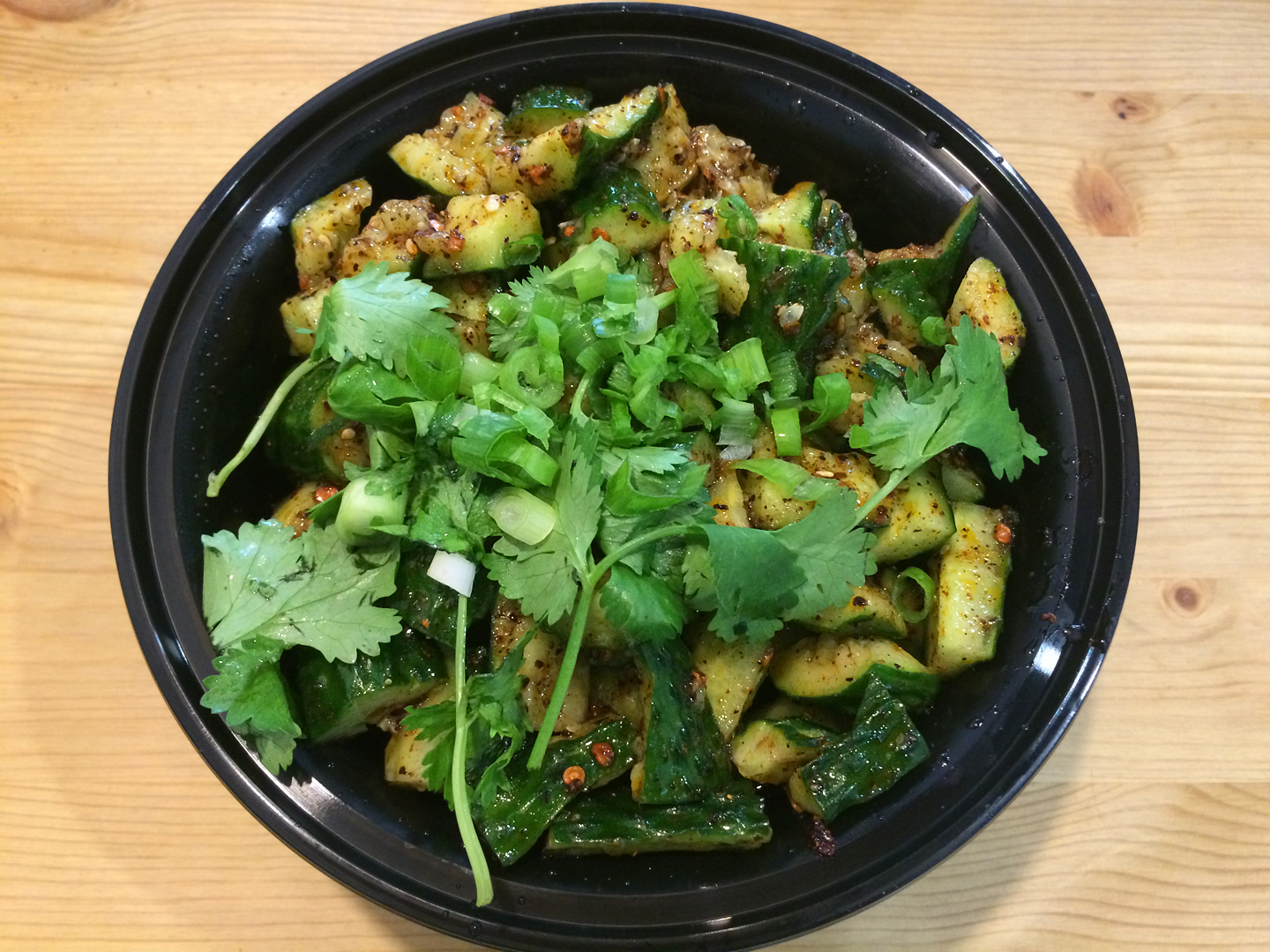
Cucumber Salad with Garlic Spicy Sauce. You may have ordered this dish (or one similar) in Sichuan restaurants – it’s a palate cleanser in some ways – and I almost ignored it, but this was the best rendition I have ever tasted; I’m glad I didn’t pass it up. Lots of black pepper, scallions, and cilantro and tons of flavor.
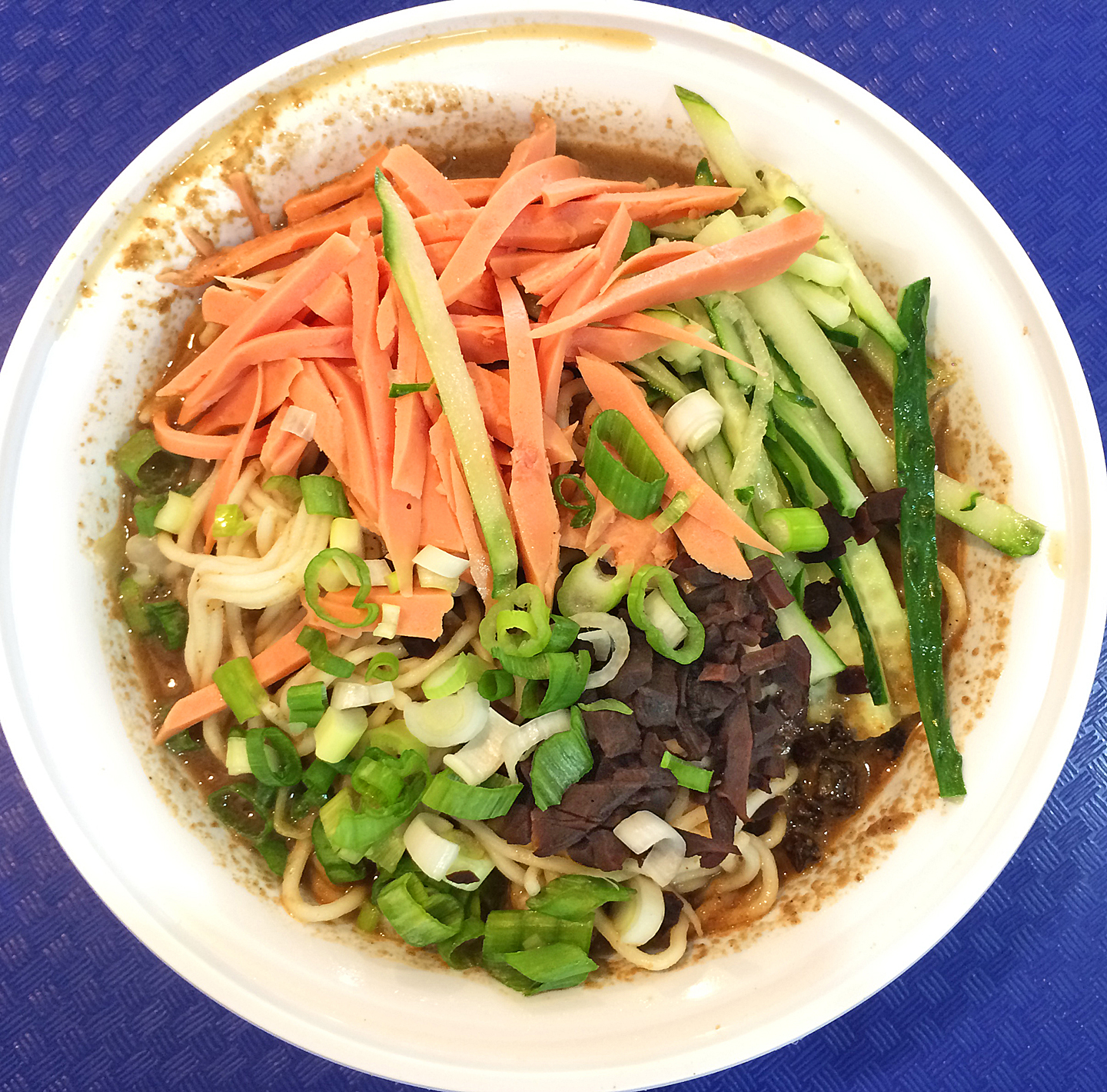
Wuhan Style Cool Noodle, a touch sweet and tangy. The artfully shredded strips of pink are Chinese ham.
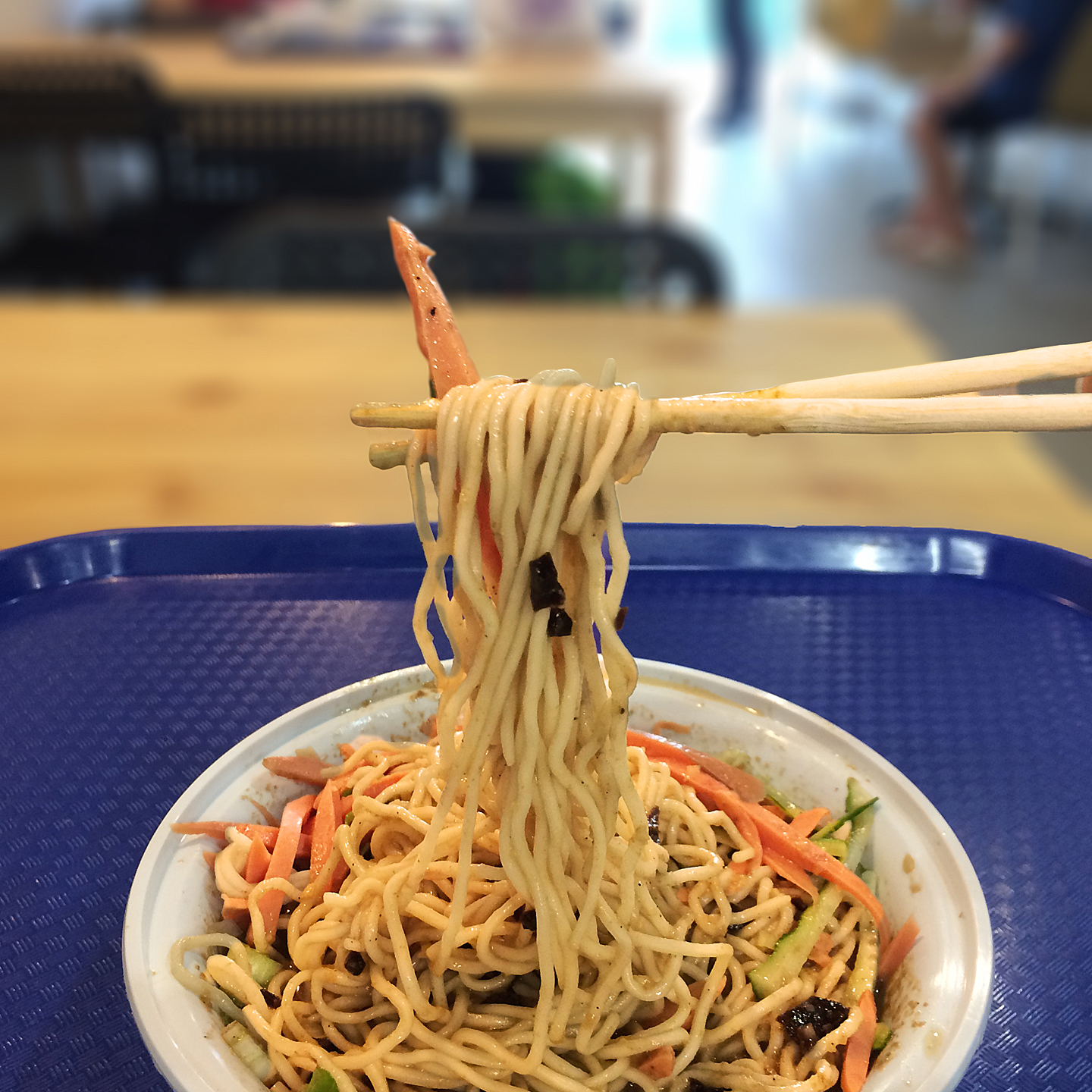
And the obligatory noodle-lift.
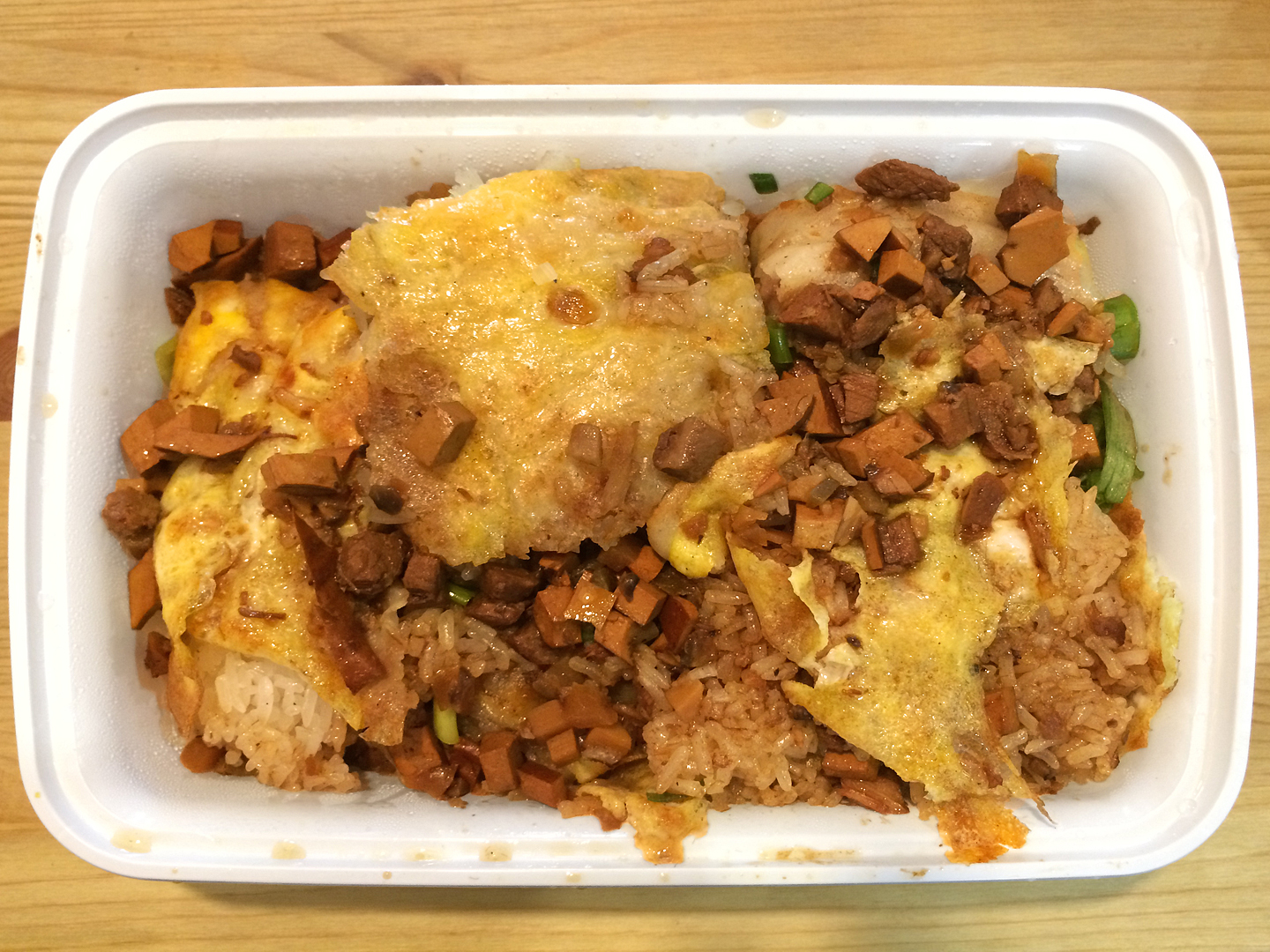
Wuhan Doupi. My understanding is that the outer wrap is a pancake made from bean powder, eggs, milk, and flour; it cradles a sticky rice filling and is served with diced meat and bits of seasoned tofu. Tasty, like everything else at Heat Noodle.
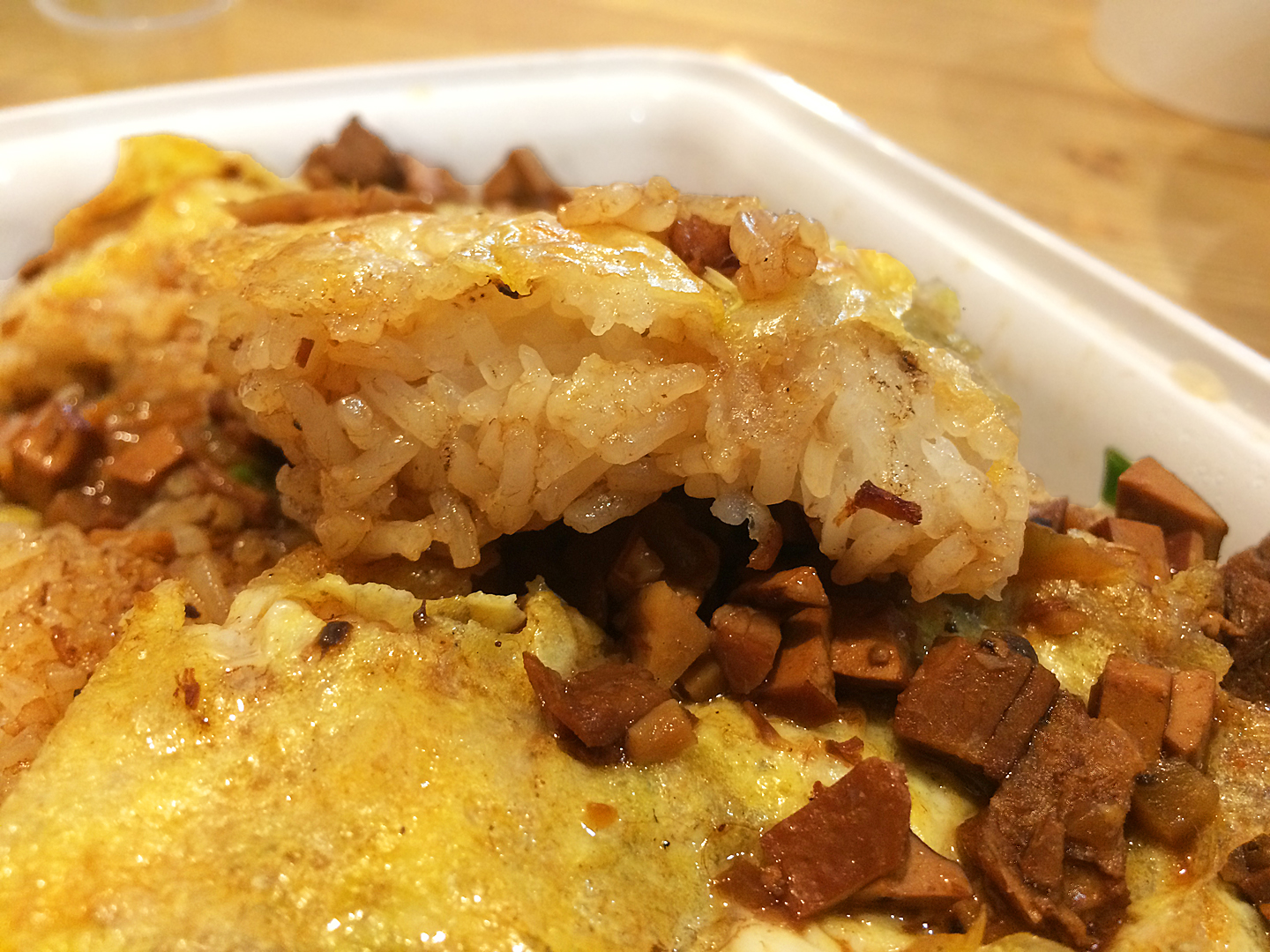
Closeup of the three elements.
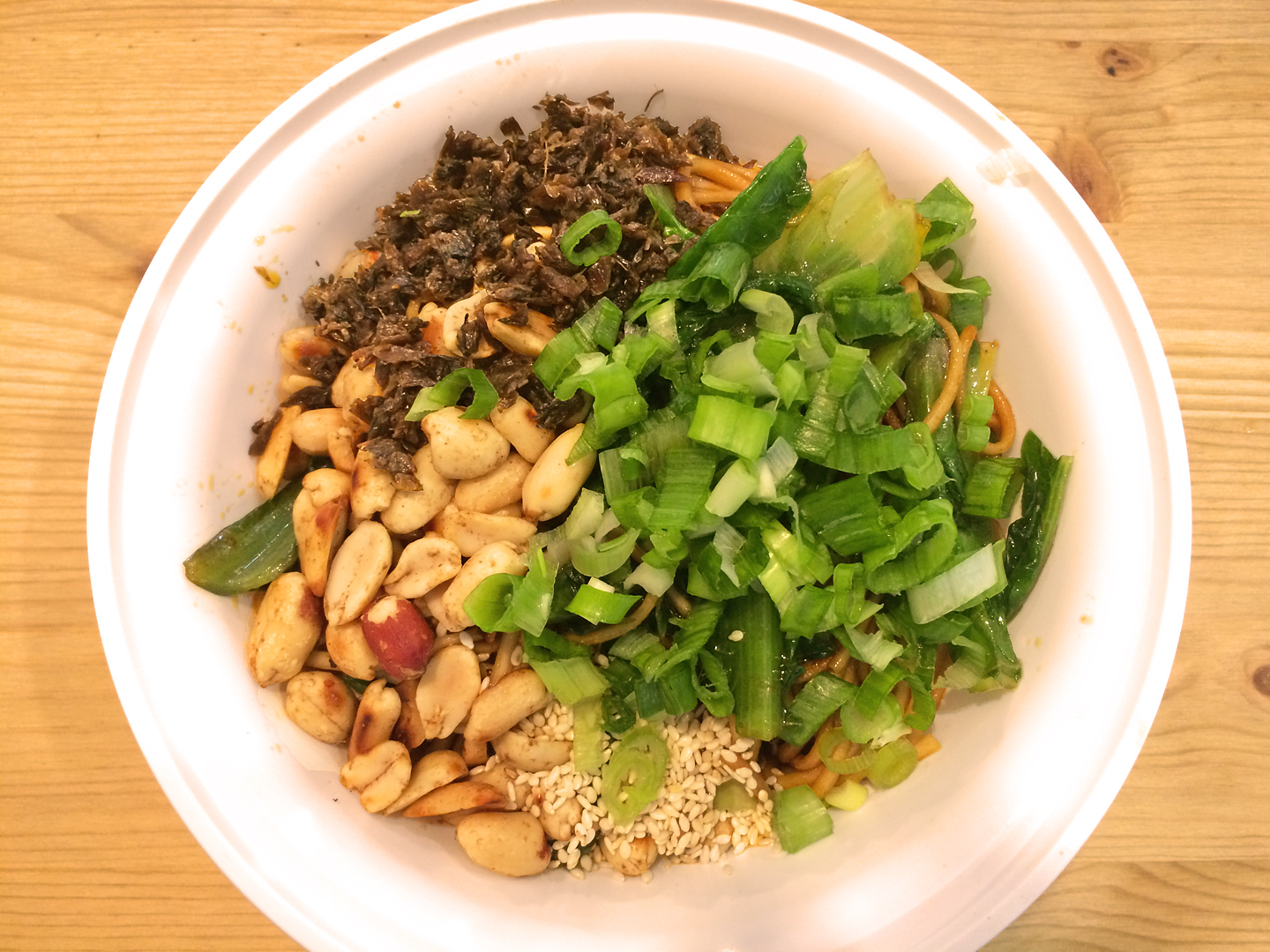
Burning Noodle. Not fiercely spicy, but you can kick it up if you like. Another variation on the theme of al dente noodles with sesame paste, soy sauce, and (I’m guessing) garlic and chili oil. These are more slender than the Hot Dry Noodles and therefore bring a different texture to the dish. Topped with peanuts, sesame seeds, scallions, and pickled vegetable.
So that concludes round one, but I’ll return for another heat in the very near future. Gotta try some other, different dishes – and they have quite a few of those.
Remember: These are not your mama’s noodles – unless, of course, your mama is from Wuhan. They’re different enough from what you might have experienced elsewhere, so curb your assumptions and head over to Heat Noodle; you’re in for a treat.
Stay tuned for more….
Part seven in a series of reports.
Some folks look forward to the annual celebration of their birthdays or anniversaries; for me it’s the occasion to cover America’s largest food and beverage trade show right here in New York City, Specialty Food Association’s Summer Fancy Food Show. (Check out full coverage and a description of a past event here.) Aside from the fact that it affords the chance to hob and nob with other professional foodies, see what products and brands are trending and poised to make a breakthrough, and get a sense of what the industry thinks the marketplace is craving, it gives me the opportunity to turn you on to new products to watch for locally or order online.
The 2020 FFS was, like almost everything else, canceled because of the pandemic, but the organization has announced a 2021 iteration of the event coming soon. At the last show I attended, I was pleased to see the folks from Masala Mama and their Organic Spice Kit for Shrimp Patia, one of those Indian dishes that’s so delicious but so labor intensive.
(Click on any image to view it in high resolution.)
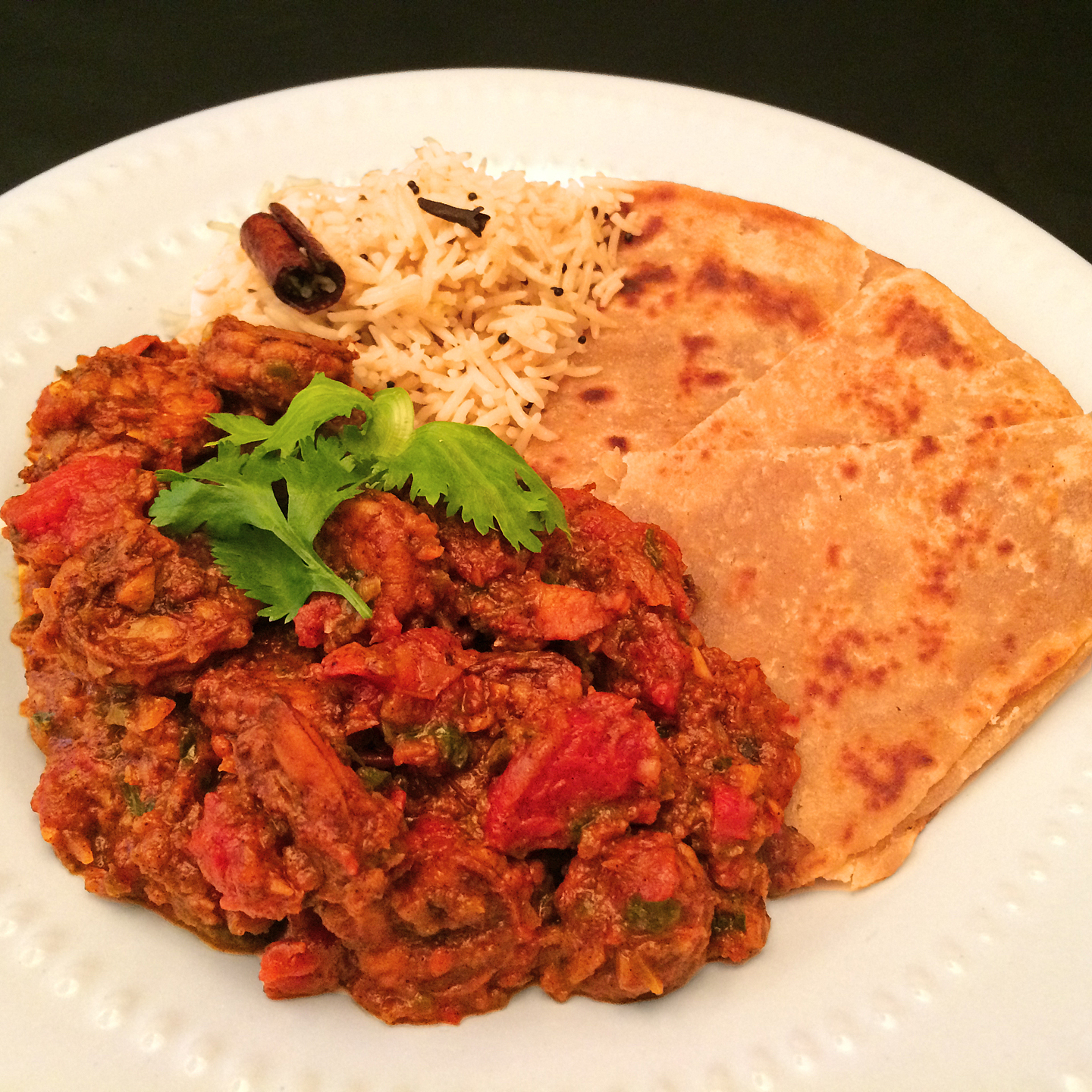
Unlike many of the curries you find on local Indian restaurants’ menus, shrimp patia is a spicy, sweet and sour dish that has roots in ancient Persia. It’s based on tomatoes (whole, paste, or puree) for umami, gets is sour component from tamarind, lemon, or lime, its heat from red chilies, its sweetness from a touch of jaggery (brown sugar), and a variety of herbs and spices which are found in this handy packet.
It’s a sauce that accompanies shellfish, chicken, lamb, or even paneer equally well. And it’s also a pain to prepare. But Masala Mama makes hunting down and measuring out the spice component easy and the dish tasted like it came from a restaurant. (The rice and parathas are my own.)
They’ve also got a line of jarred sauces – even easier! Check out their website, masalamamafoods.com, to shop online and see what they’re up to now.